Coruscant (pronounced /'kɔɹəsɑnt/), also known as Jewel of the Core Worlds, or Imperial Center during the rule of the Galactic Empire, was an ecumenopolis—a city-covered planet, collectively known as Imperial City— in the Coruscant system of the Core Worlds. Though debated by historians, it was generally believed that Coruscant was the original homeworld of humanity. Coruscant was at one point also historically the home of the ancient Taung and Zhell. Noted for its cosmopolitan culture and towering skyscrapers, Coruscant's population consisted of trillions of citizens hailing from a vast array of both humanoid and alien species. In addition, Coruscant's strategic location at the end of several major trade routes enabled it to grow in power and influence, causing the city-planet to surpass its early rivals and become the hub of galactic culture, education, finance, fine arts, politics and technology. It was the location of several major landmarks, including the Jedi Temple, Monument Plaza, and the Senate Building.
Serving as the capital of the galaxy since the ancient days of the old Galactic Republic, Coruscant was at the center of many historic events, such as the Jedi Order's conflict with the Sith. Although the planet fell under Sith control for a time, Republic forces ultimately liberated Coruscant with the aid of the Jedi Knights. Their victory was so decisive that at one point the Sith became all but extinct, replacing an age of darkness and strife with the democratic rule of the modern Galactic Republic. Retaining its status as galactic capital, it was on Coruscant where the Galactic Senate governed the galaxy for centuries, establishing an era of peace that lasted for almost a millennium under the protection of the Jedi peacekeepers. However, political intrigue wrought by corruption and secession transformed Coruscant into a dangerous environment by the time of the Clone Wars with the Confederacy of Independent Systems. On the eve of the New Order, fulfilling a grand scheme, Supreme Chancellor Sheev Palpatine, who was, in fact, the Sith Lord Darth Sidious, declared the Jedi enemies of the state, resulting in a galaxy-wide purge that all but destroyed the Jedi Order. Without the Jedi to oppose him, Palpatine dissolved the Republic and declared himself Galactic Emperor to the applause of the now Imperial Senate.
Coruscant continued to serve as galactic capital under the Empire, having become the Emperor's throneworld, although Palpatine himself disappeared from public view for the most part, leaving the day-to-day governing to his advisors in the Imperial Ruling Council. The Empire maintained a firm hold on Coruscant throughout the Emperor's reign, but with his defeat at the Battle of Endor in 4 ABY by the Alliance to Restore the Republic, citizens of Coruscant celebrated by revolting. Unable to command the military's allegiance as the rebels restored the Republic, Grand Vizier Mas Amedda's rule was limited to Coruscant. Fleet Admiral Gallius Rax, the self-proclaimed Counselor to the Empire, in short order. Hoping to escape prosecution for war crimes, Amedda surrendered himself to the New Republic, which demanded that he surrender the entire Galactic Empire in return for amnesty. Following Rax's death at the Battle of Jakku in 5 ABY, Amedda signed the Galactic Concordance—a peace treaty recognizing the Empire's capitulation and the end of the Galactic Civil War. Amedda himself was permitted to return to Coruscant as the head of a provisional government. Yet his authority was merely ceremonial; under the supervision of Republic overseers, he became a virtually powerless figurehead.
Unlike previous galactic governments, the newly restored Galactic Senate broke with millennia of tradition by not establishing Coruscant as their headquarters, instead preferring to designate other member worlds with the status of galactic capital through an electoral system. Nevertheless, Coruscant continued to have important status within the New Republic, with full senatorial representation and, by the time of the Cold War, was aligned with the worlds that identified as Centrists. However, by this point, Coruscant had actually fallen under the control of crime syndicates. Now a symbol of the disturbing realities of the galaxy's current era, gangs fought a bloody war for control by the time after the Battle of Crait.
In the aftermath of the Battle of Exegol, various worlds sought to drive the First Order military from their soil. Coruscant was one such world where an uprising took place as part of a galaxy-wide effort to overthrow the First Order.
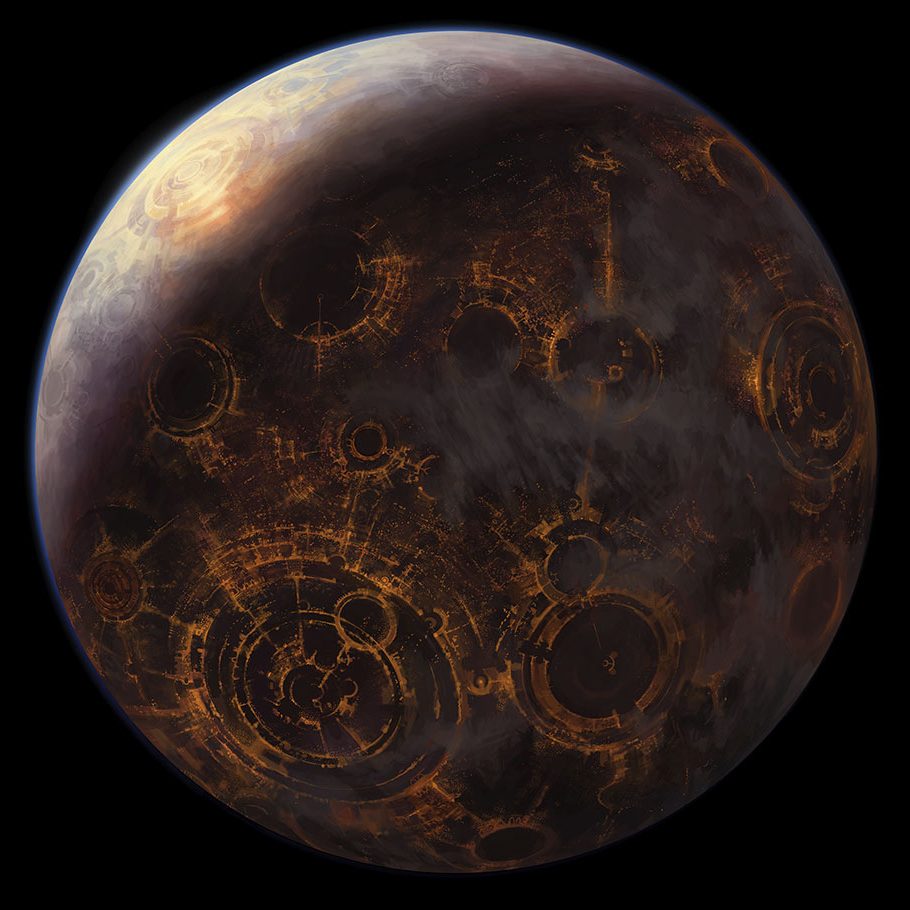
Coruscant, a bustling ecumenopolis in the Core Worlds.
Located in the Coruscant subsector of the Corusca sector within the Core Worlds region, Coruscant was a planet covered in a dense ecumenopolis. The diameter of Coruscant was 12,240 kilometers; it orbited a small star, known as Coruscant Prime, in the Coruscant system. The distance between Coruscant and its star varied from 207 to 251 million kilometers, and as such, the planet did not have a climate that suited any one particular species. However, this was rectified by technology and the vast heat generated by the multi-level cityscape.
Coruscant had four moons—Centax-1, Centax-2, Centax-3, and Hesperidium. From space, Coruscant's luminosity was slightly dimmed by the planet's hazy cloud cover. The planet's weather patterns were affected by the troposphere-piercing buildings that covered the planet's surface. Inside the tallest buildings, enormous differences of temperature and air pressure from top to bottom produced unusual and unpredictable microclimates. As such, Coruscant had its own weather-control system. While this artificial climate was largely temperate in nature, parts of the planet occasionally experienced infrequent snowfalls.
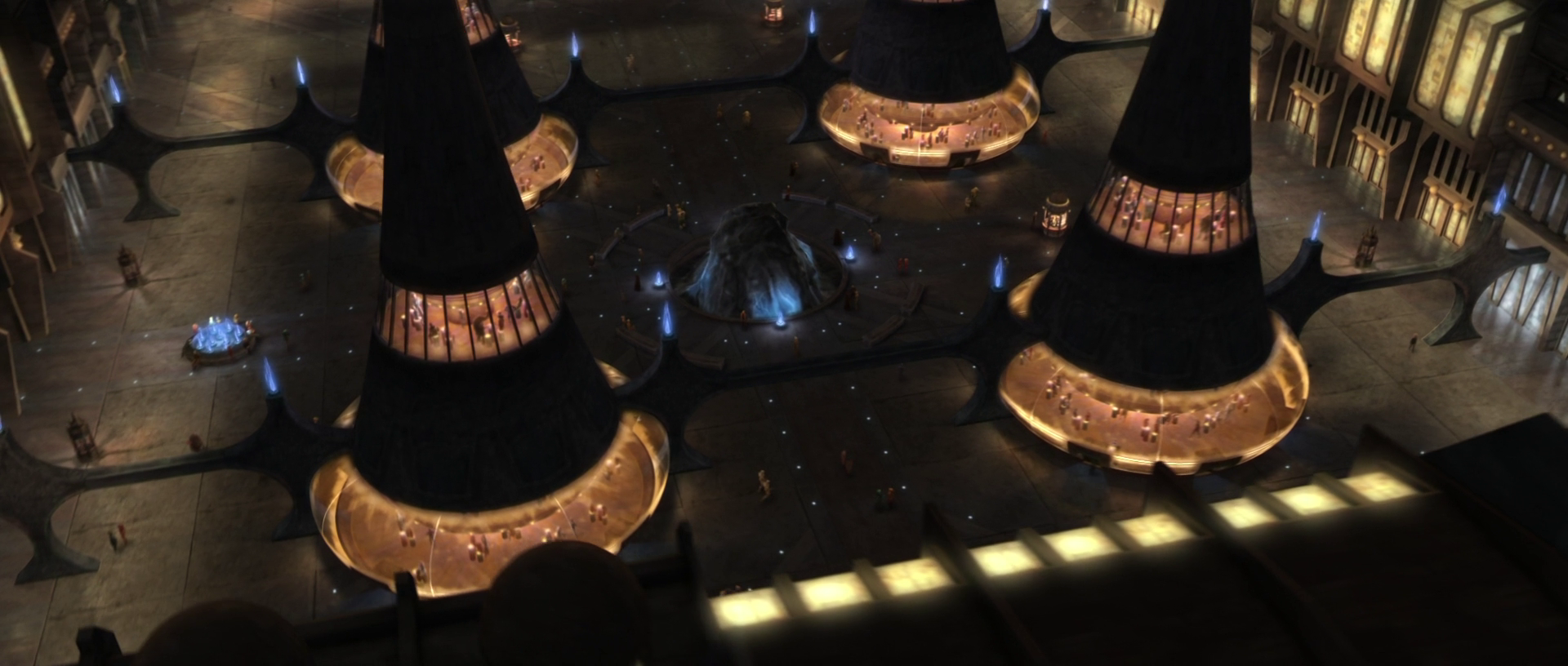
The millennia of urban development on Coruscant left sparse evidence of its pre-ecumenopolis state.
Thousands of years of development destroyed the planet's ancient mountains and seas. Monument Plaza housed the top of Coruscant's last remaining mountain peak, that being the peak of the Umate. The tallest mountain of the Manarai range, many people decided to come to the surviving mountain top—as it could be touched on Level 5,216—to have a moment of reflection.
By around 232 BBY, a dark ring surrounded the peak's base as a result of the countless hands that had touched the rock. Generations of city planners decided to keep the mountain peak. During the High Republic Era, the surface around the peak was covered in greenery in an attempt to recreate the trees and other plants that would have been around the Umate's base many millennia earlier. Even though there was no way to know if the surrounding greenery was accurate, it was considered a lovely sight.
Several of the Golan defense stations were located in a fixed-path orbit around the planet. During the Imperial Era, dozens of the Golan-II Defense Platforms and Golan III defense platforms were in orbit of Coruscant and other important Imperial Core Worlds for defense.
Small reptiles used as in a roulette game played on Coruscant evolved through mutations they experienced in the planet's gutters. Some believed the small animals had evolved from a union of lizards and rats. There were 24 hours in a Coruscant day, and 365 days in a Coruscant year. Owing to its importance in galactic history, the galaxy used a dating system standardized on Coruscant, and the planet's galactic coordinates were 0-0-0 despite it not being the exact geographical center of the galaxy.
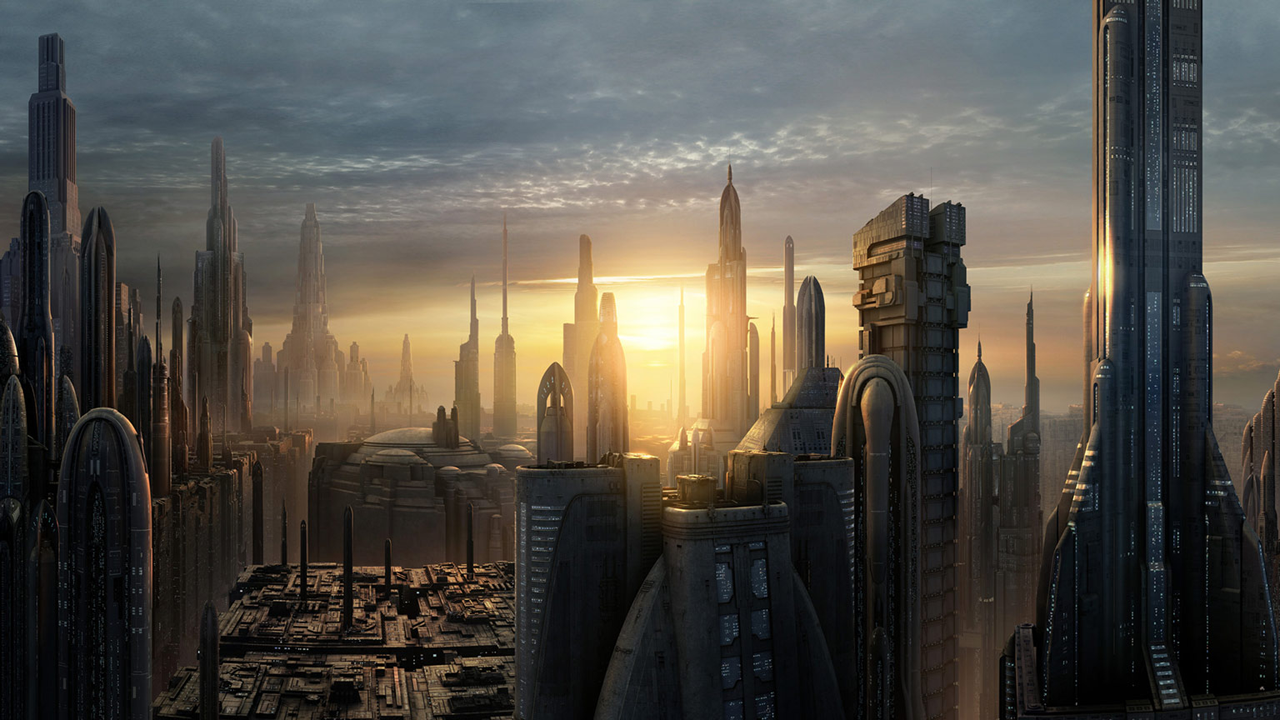
The urban sprawl that covered the surface of Coruscant was known as Galactic City prior to the Imperial Era.
Coruscant's surface was defined by its urban sprawl, which collectively was called Galactic City Officially renamed as Imperial City during the Imperial Era, the dense city blocks were built on top of each other, with lowest being Level 1 and the highest reaching to Level 5127. The lowest known habitable level was Level 5. At its highest level, Galactic City's skyscrapers were built with many reaching 6,000 meters into the atmosphere, with sleek, transparisteel edifices standing next to older duracrete structures. As a hustling, bustling planet-wide city with an underworld full of dark alleys and an abundance of people, Coruscant provided the ideal conditions for a thief to prosper, especially targeting tourists from quieter planets.
Galactic City was divided into sectors named by designated coordinates. Some sectors also had unofficial names; for example, sector H-46 was the nicknamed of "Sah'c Town" due to the Sah'c family's ownership of much of the sector. Sectors were further divided into zones, with zones determined by purpose, such as financial, senatorial, or industrial zones.
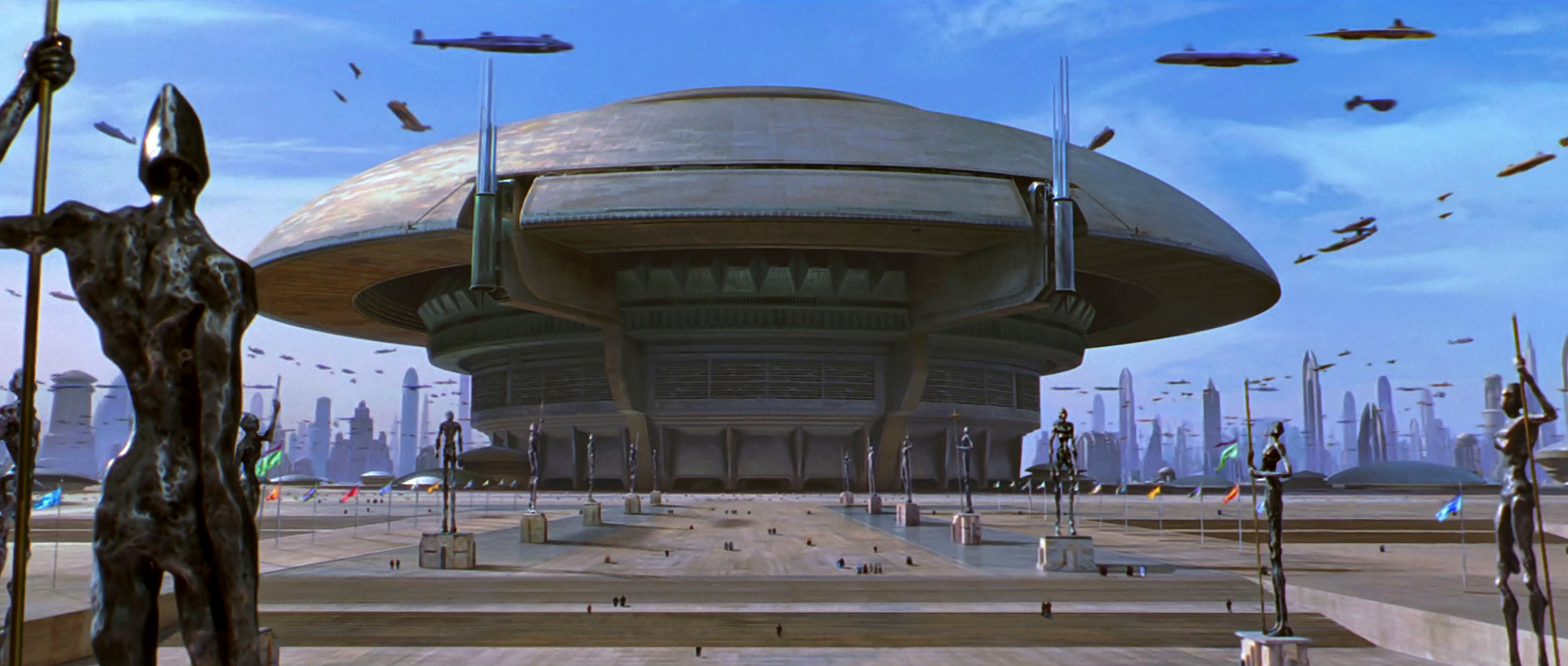
The Galactic Senate's headquarters was located in the Federal District of Coruscant.
Under the Galactic Republic, the Federal District, also called the Senate District, was the center of political activity on the planet, as it was home to both the Senate Building, seat of the Galactic Senate, and the Senate Office Building, where the Supreme Chancellor had his or her own set of offices. It served as the main district for government buildings and institutions including the City Municipal Authorities Building and the Galactic Courts of Justice. The Federal District was also the location of the Jedi Temple, headquarters of Jedi Order, as well as 500 Republica, a massive residential tower home to the most powerful on Coruscant.
Under the rule of the Galactic Empire, the Federal District was transformed and heavily fortified, and the Jedi Temple was repurposed as the Imperial Palace. The palace became a part of the "supreme triangle" of structures alongside the Imperial Inspectorate HQ and the massive COMPNOR arcology, which housed the city-block-sized ISB Central Office of the Imperial Security Bureau. Next to the Federal District was the Verity District, which under the Empire housed the Hall of Adjudication, the Hall of Imperial Register, the Institute to Preserve Imperial History, and the ISB Academy and Offices.
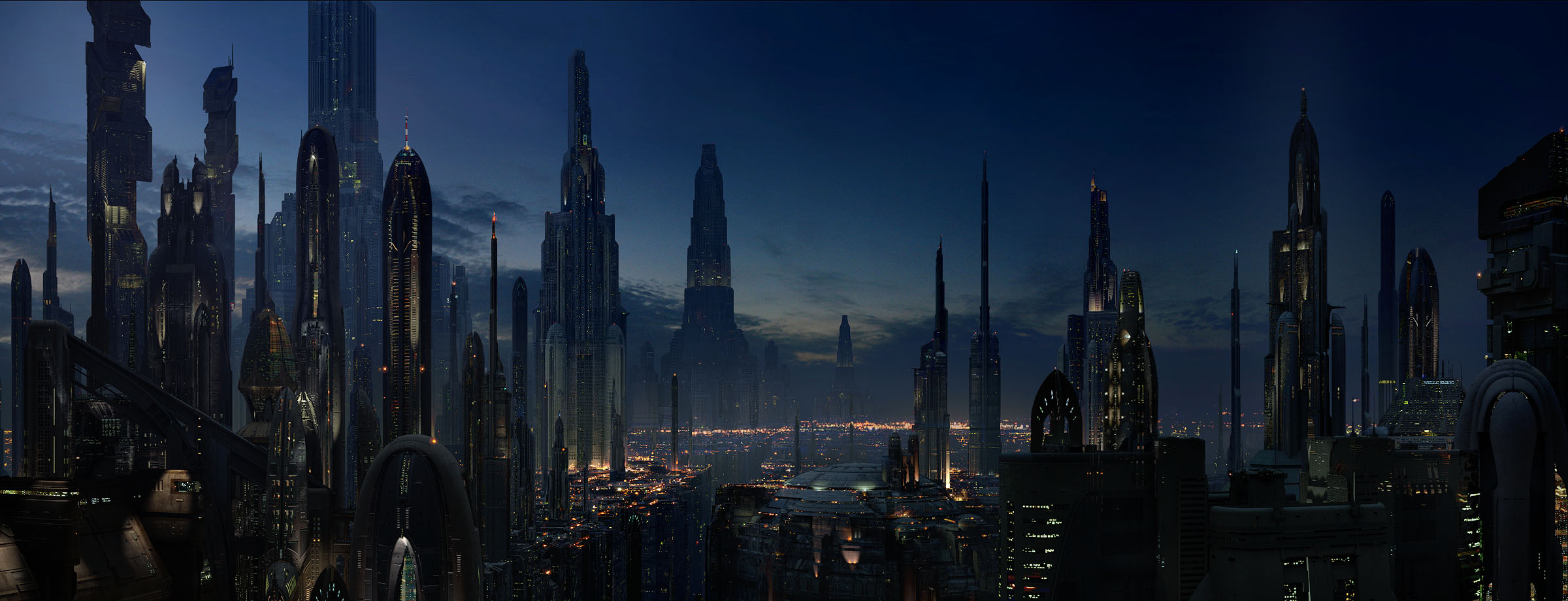
The surface of Coruscant featured towering skyscrapers and streams of speeder-filled air traffic.
The planet's skylanes directed the air-traffic of airspeeders via auto-navigation system that moved the speeders along preprogrammed routes. As such crashes were extremely rare. Precautions were taken though with and skytunnels incorporating bombproof shields and high-level tracking systems, and most structures on Coruscant had defensive shields to protect windows from stray and out-of-control vehicles.
Owing to the planet's prominence in terms of galactic affairs, Galactic City housed numerous governmental offices and inter-galactic headquarters in its winding depths. The central planning strategy offices of the food giant Tagge Corporation could be found within the city, along with the droid research institutes funded by Cybot Galactica, and the Bank of the Core, one of the galaxy's largest financial institutions. The towers were symbols of power and authority, and the largest could hold populations of well over a million.
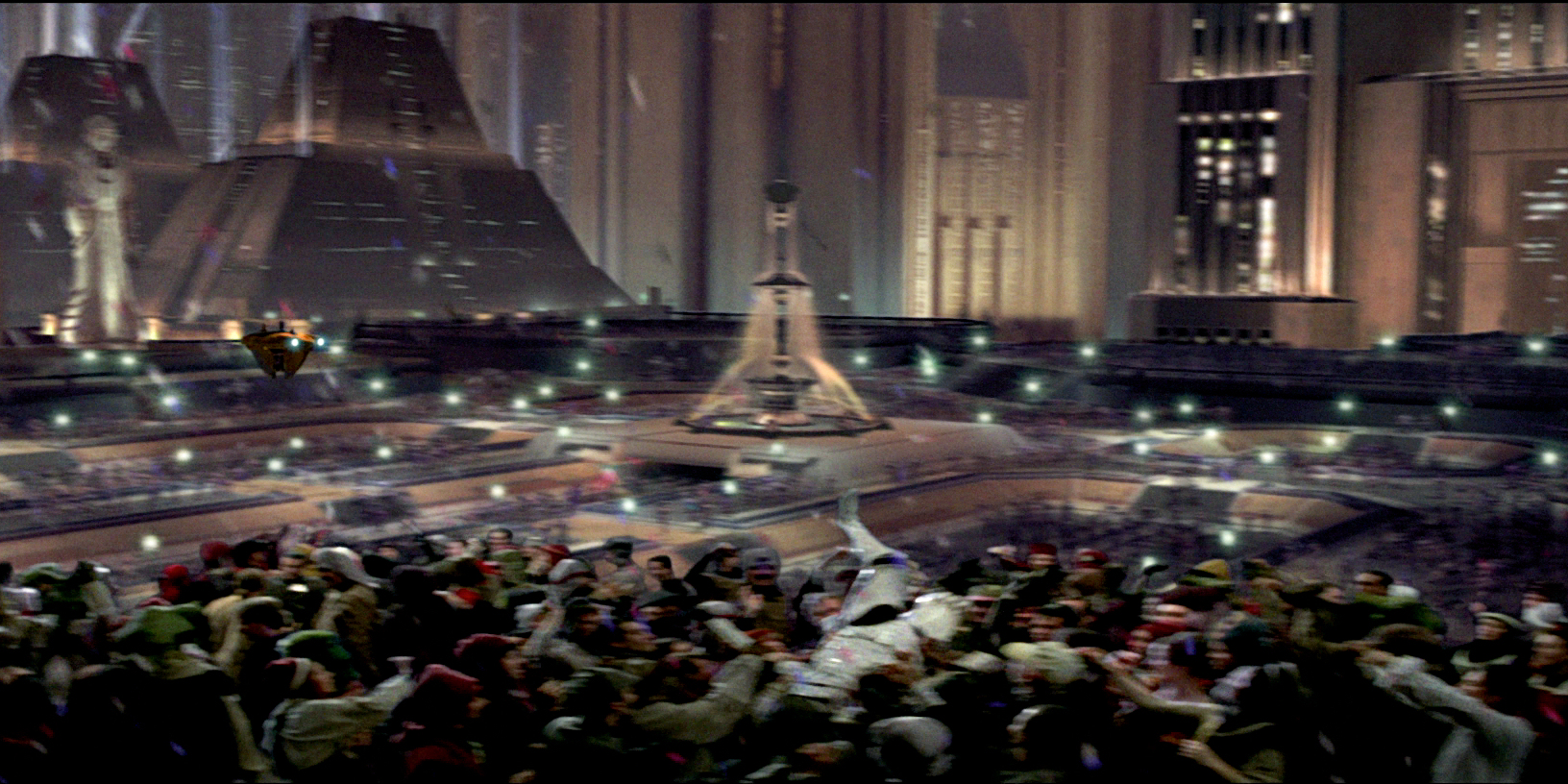
Coruscant was home to a population of trillions of beings, both humans and aliens, collectively known as Coruscanti.
The planet's residents were known as the Coruscanti and of the estimated trillions inhabitants of the planet, 68% were believed to be human. On Coruscant, wealth increased with altitude. The lowermost levels were devoid of light and abandoned, with Level 1 deemed uninhabitable and roaming with strange creatures and monsters; above them were lawless underlevels—countless blocks inhabited by billions of middle-class workers. The super-towers on Level 5217 remained home to the ultra-wealthy. Furthering this class divide, citizens who lived in the upper levels were able to breathe air that was filtered and clean, while lower-class inhabitants were forced to breathe the air of toxic fumes from factory and vehicular waste. As such, most visitors to Coruscant chose to bring their own air supply to last the length of their stay.
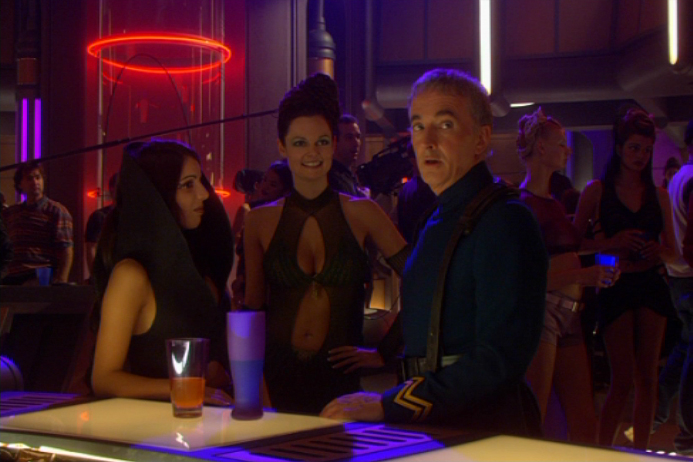
Though unconfirmed, Coruscant was believed to be the ancestral homeworld of the human species.
In ancient times, Coruscant was populated by two sentient species, the Taung and the Zhell. Though its connection to the human species was unconfirmed, Coruscant was widely accepted as the human homeworld. Nevertheless, the human Axel Greylark claimed that, at least to his knowledge, the people of Coruscant did not have grand creation myths. In time, humans expanded throughout the known galaxy, exploring and colonizing vast regions of space, with Coruscant becoming the galactic center of political and cultural life. In 100,000 BBY, the lowest levels of Coruscant, such as Level 1, were once called home by the people of Coruscant. As the planet expanded up, however, the buildings turned to ancient ruins that were buried. It was believed those low levels were left uninhabitable.
Many different political systems held control over Coruscant during its existence, with these systems ranging from brutal empires and dictatorships to democracies. Coruscant was one of the Galactic Republic's original Core World founders, and outmaneuvered its early rivals to become the economic and cultural engine of civilization as it expanded along newly chartered hyperspace routes. As these early hyperspace lanes became well-established trade routes, increasing numbers of alien species migrated towards Coruscant; this would accelerate the construction of new residential levels and sectors for the city-world's booming population even as the growth of its rivals slowed. Coruscant's effective status as the center of the Republic led to it being awarded the coordinates 0-0-0 on all standard navigation charts. As the centuries passed, the Galactic City expanded and 5,000 years before the Galactic Civil War, it almost covered the entire surface of the planet.
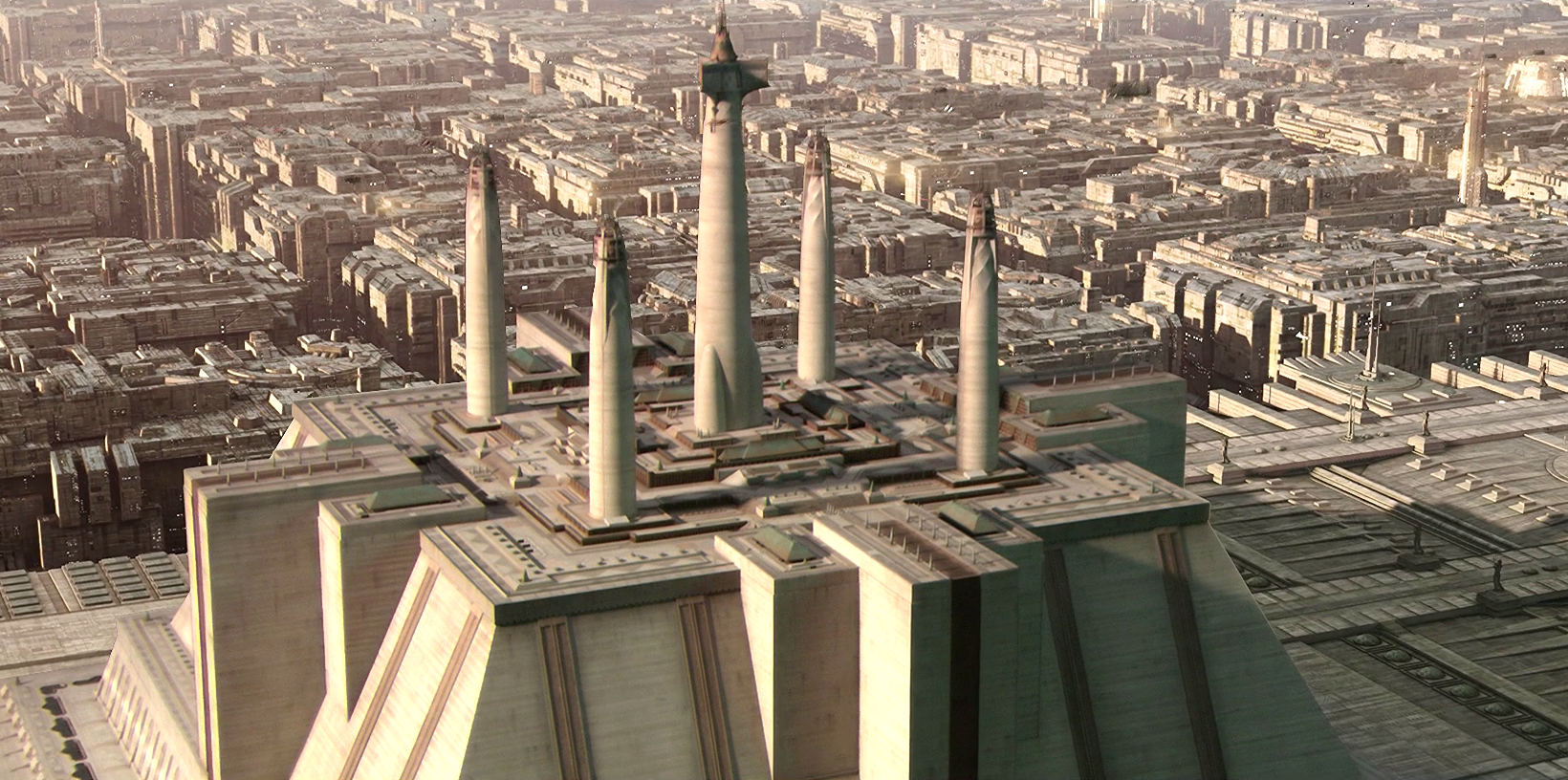
The Jedi Temple on Coruscant was built upon an ancient shrine of the Sith.
The ancient Sith Lords built a shrine on Coruscant. When the Jedi Knights ousted them, they built their temple over it. During the Jedi-Sith War, the Sith captured Coruscant, but it was later reclaimed by the Republic in the Liberation of Coruscant. Victory over the Sith at Ruusan led to the birth of the modern Galactic Republic with Coruscant as its capital. Beings from across the galaxy emigrated to Coruscant seeking opportunities on the bustling planet. However, many newcomers were ultimately relegated to low-level positions and subjected to a life of crime and violence. Nonetheless, it was largely accepted that whoever controlled Coruscant controlled the galaxy.
Over the millennia representatives gathered in the Galactic Senate for diplomacy and dispute resolutions, creating and enforcing laws, and maintaining peace. As such, Coruscant became known as the galactic capital for thousands of years. Around 382 BBY, a Toydarian became inebriated and was arrested for disturbing the peace on Level 1392, resulting in their imprisonment on Level 2623. Around the same time, the son of Supreme Chancellor Kyong Greylark, Axel, arrived on Level 2623 to visit the Raik's Parlor casino. However, after starting a fight in the gambling den, he was arrested by members of the Coruscant Guard, who revealed they had been sent by his mother.
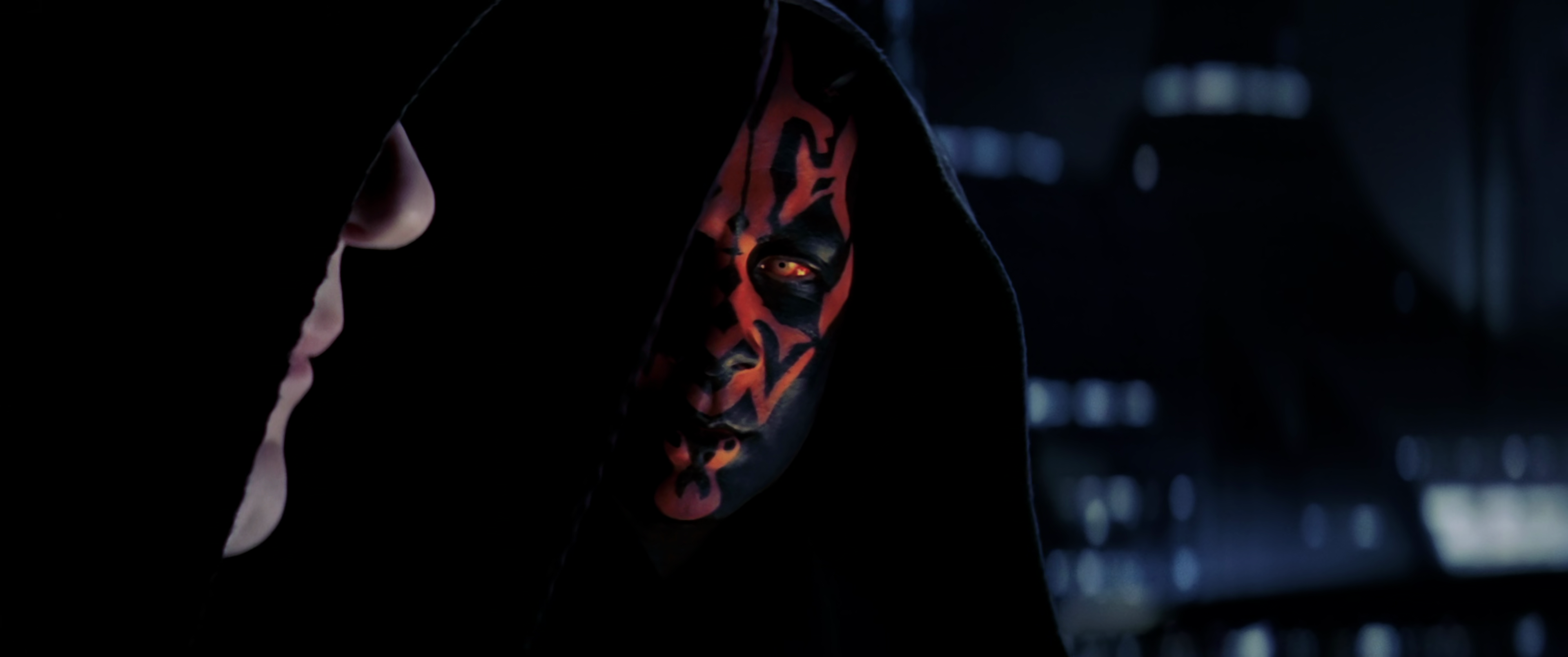
The modern Sith secretly inhabited Coruscant, influencing Republic politics and avoiding detection by the Jedi.
It was towards the end of the Republic Era that the Sith Lord Darth Sidious executed his plans for galactic domination, beginning with the blockade of Naboo, his homeworld that he represented as Senator Sheev Palpatine. The Sith Order, having survived its near destruction through Darth Bane's Rule of Two, conspired for generations to reclaim their place of dominance in the galaxy. By Sidious' time, the Sith secretly resided on Coruscant in spite of the Jedi Order's presence on the capital. The Jedi at the time were under the belief that their ancient rivals had been extinct for over a millennium.
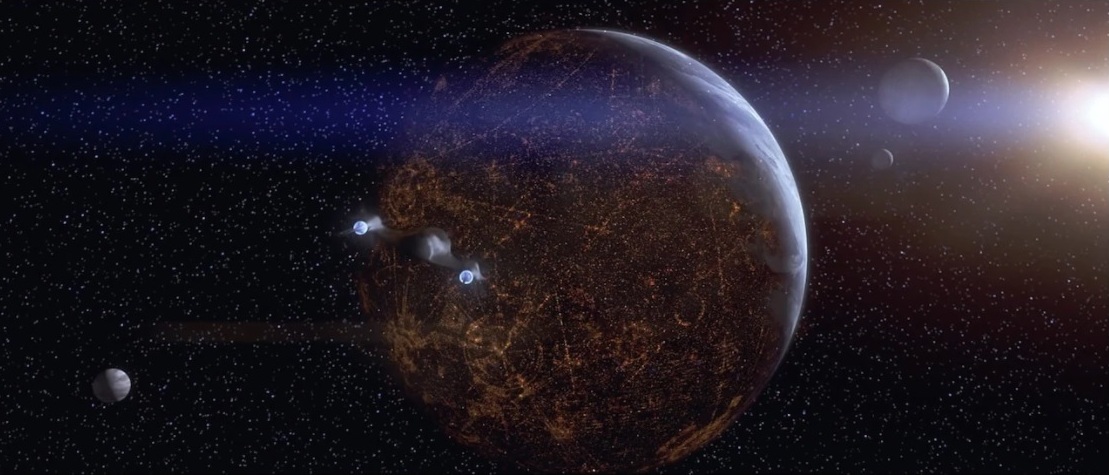
The queen of Naboo journeyed to the galactic capital to protest the Trade Federation's invasion of her world.
Under the influence of the Sith, the Trade Federation blockaded and occupied the planet Naboo in 32 BBY, forcing its elected ruler, Queen Padmé Amidala, to flee to Coruscant seeking Senator Palpatine's counsel. Among the queen's retinue was Anakin Skywalker; a former slave from Tatooine, Skywalker was brought to the Jedi Temple by Jedi Master Qui-Gon Jinn, who believed him to be the Chosen One destined to bring balance to the Force. In the Senate, Supreme Chancellor Finis Valorum was unable to respond to the Invasion of Naboo. Amidala, having learned from Palpatine about the corruption in the Republic government, called for stronger leadership by denouncing Valorum as a head of state. Consequently, Valorum was voted out of office and Palpatine was elected as the new Supreme Chancellor. During the early years of Palpatine's chancellery, he brought Skywalker to the lower levels of Coruscant, revealing corruption and the Republic's limitations to the young Jedi apprentice.
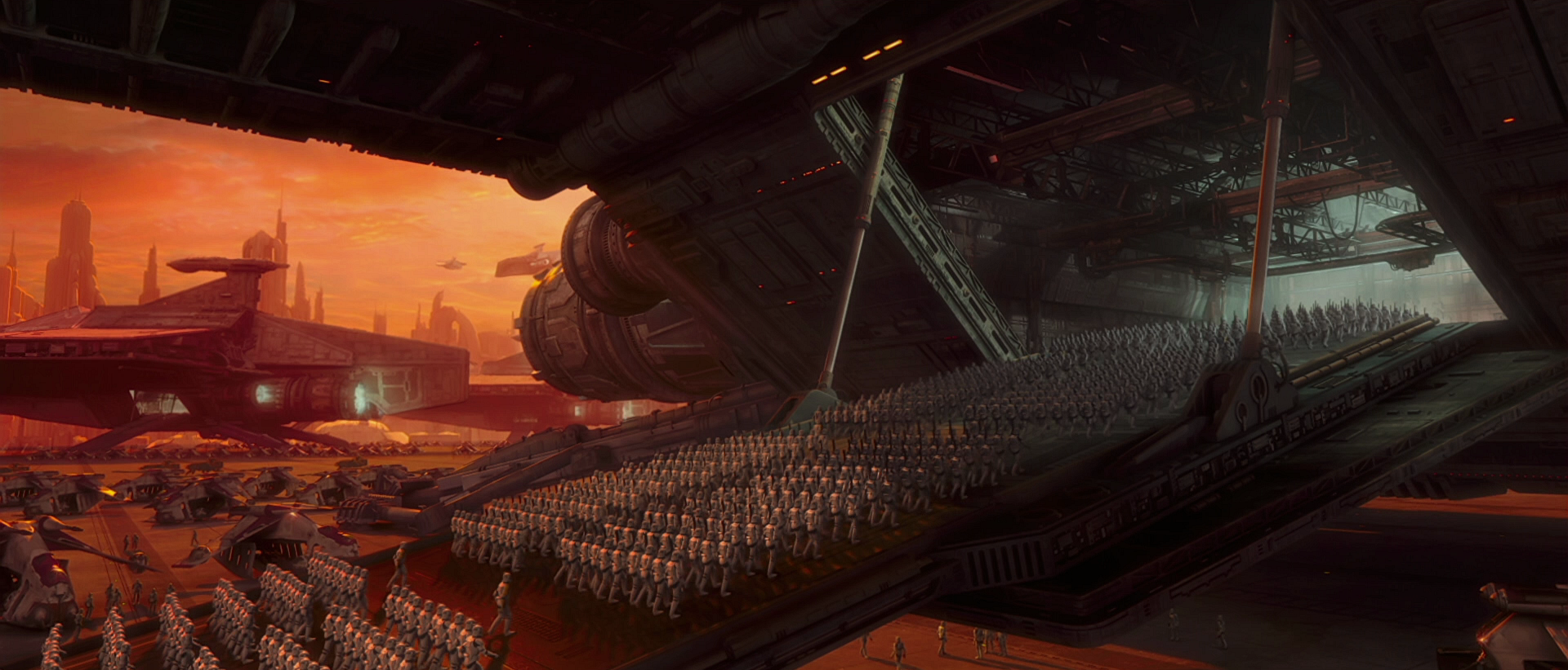
The formation of the Grand Army of the Republic occurred shortly before the first battle of the Clone Wars.
The Clone Wars began with the First Battle of Geonosis in 22 BBY, when the Separatist Crisis that began with the establishment of the Confederacy of Independent Systems escalated into open war between the Republic and the Separatists. In the same year, Amidala became the target of an assassination plot while she was on Coruscant opposing the Military Creation Act. The former queen-turned-senator was saved from the bounty hunters Zam Wesell and Jango Fett through the efforts of Kenobi and Skywalker. While Skywalker escorted Amidala to Naboo for her protection, Kenobi tracked Fett to the extragalactic world of Kamino where he discovered that an army of elite soldiers had been bred from Fett's genetic template. Kenobi followed Fett to Geonosis and learned that several commercial organizations pledged their resources to Count Dooku and the Separatist Droid Army.
Having learned of the Separatists' plan to attack the Republic, the Loyalist Committee gave serious consideration to using the Kaminoan clone troopers as the basis for the Republic Military. Though the Jedi Order had long stood as the Senate's instrument of peace in the galaxy, the limited number of Jedi Knights prevented them from fighting a galactic-scale conflict on their own. Junior Representative Jar Jar Binks, acting on behalf of Naboo in Amidala's absence, proposed a motion to grant emergency powers to the Supreme Chancellor. The Senate voted in favor of the Gungan politician's request, allowing Chancellor Palpatine to unilaterally create the Grand Army of the Republic.
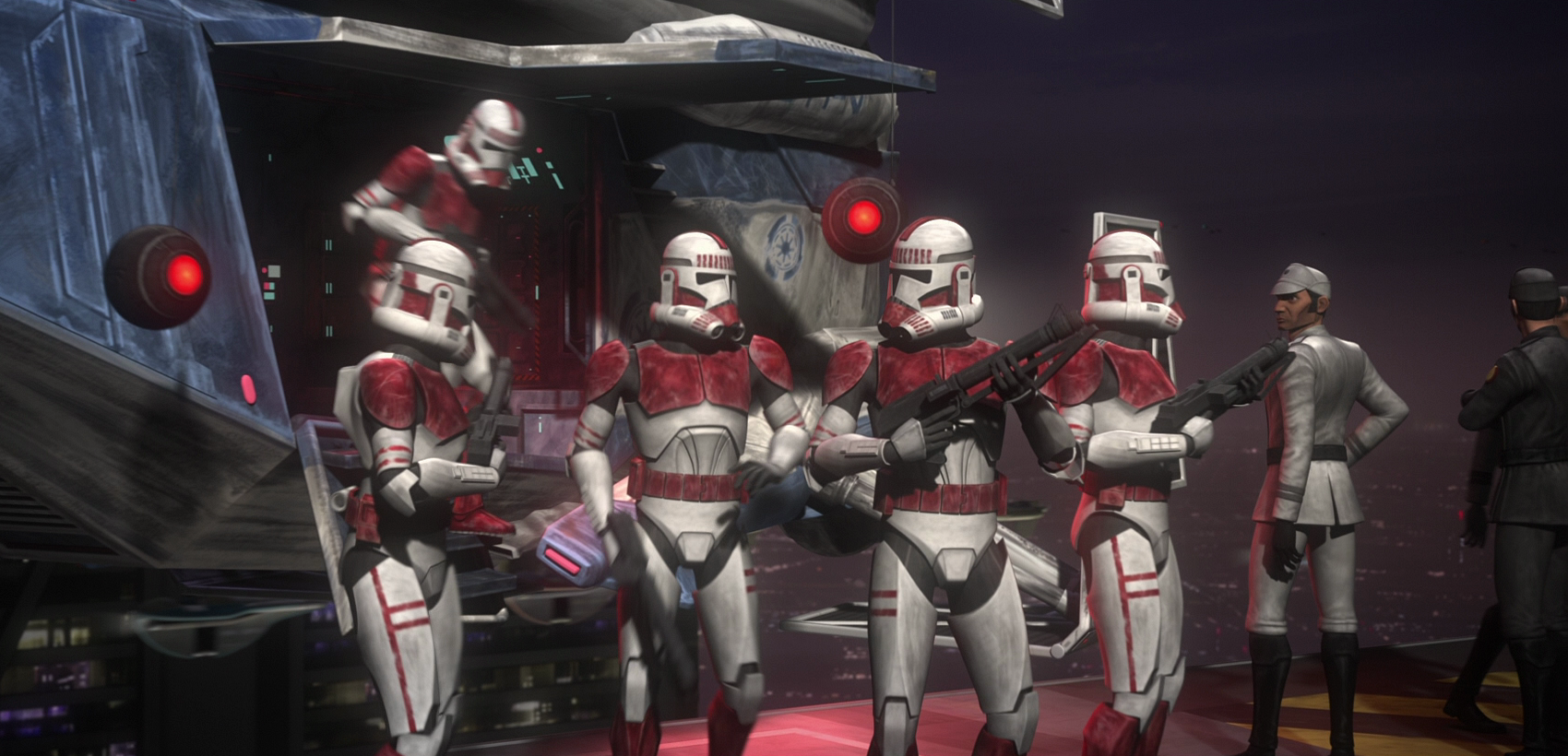
The Clone Wars saw the creation of the Coruscant Guard, an elite unit of clone shock troopers.
The Clone Wars became one of the most turbulent times in galactic history and the first, full scale war in over a thousand years. As the capital of the Republic, Coruscant, already a hotbed of political intrigue, became a target for both military and political reasons. Situations and events that were unthinkable centuries before became commonplace. Even prior to the beginning of the war, changes could be seen in the Republic. The Senate, already corrupt and bloated found it difficult to respond, delegating emergency powers to Palpatine. The chancellor himself brought changes such as implementing the use of his personal Red Guards instead of the Senate Guards. During the Clone Wars, the Coruscant Guard was formed to serve as a clone security force for the Republic capital. Composed of elite clone shock troopers, the Coruscant Guard was led by Clone Commander Fox.
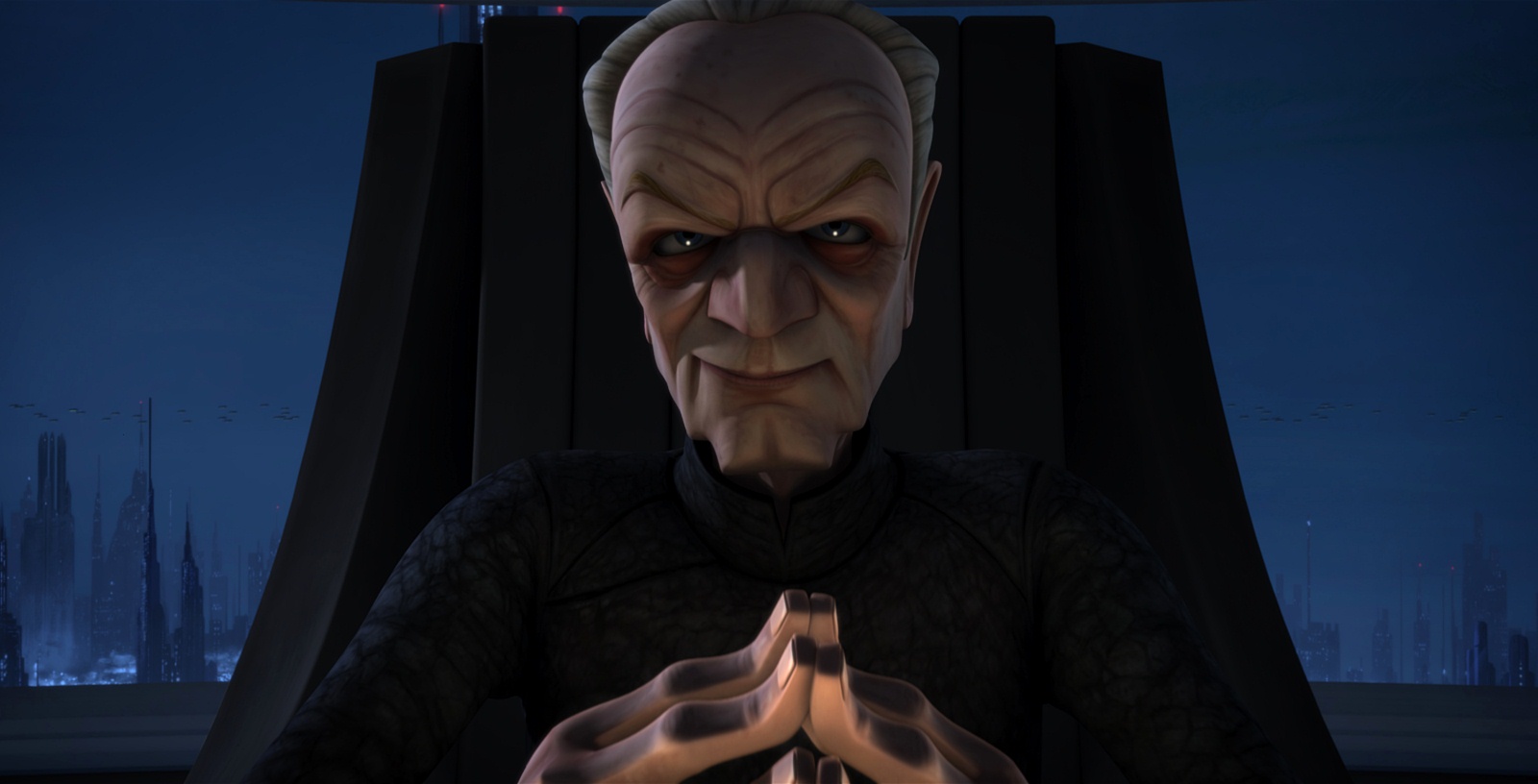
Throughout the conflict, Supreme Chancellor Sheev Palpatine directed the Republic war effort from Coruscant.
As the Grand Army and the Republic Navy spread across the galaxy to defend the Republic, the Jedi, long taking the stand of being peacekeepers instead of soldiers, led the clone troopers as commanders and generals. The dramatic changes were noted by the Jedi and the Republic citizens alike, specifically on Coruscant. Unknown to everyone except a select few, Coruscant was from where the entire war was continually manipulated by Palpatine. As Supreme Chancellor, he took overall charge of the Republic military and directed the war effort from his office in the Senate Office Building. As Darth Sidious he directed Dooku's actions designed to continue the war and further his plans.
During the Clone Wars, Chancellor Palpatine had the Zillo Beast from Malastare transported to Coruscant for scientific research, overruling the objections of his Jedi advisor Mace Windu. Palpatine ordered the Zillo Beast's destruction, but the creature broke out of the Republic Science and Technical Center and proceeded on a rampage across Coruscant's Senate district. The clone forces on Coruscant converged on the Zillo Beast, using poison gas to kill it while the Jedi protected the chancellor. The Senate hostage crisis was carried out by bounty hunter Cad Bane as part of a Hutt Clan plot to free Ziro Desilijic Tiure. While clone troopers had already started to see open use on Coruscant at that point, the failure of Senate Guards during the incident became a justification for the continued use of clones on the capital itself. In fact, clones came to replace Senate Commandos as Coruscant-based additional security and fast-action response military forces.
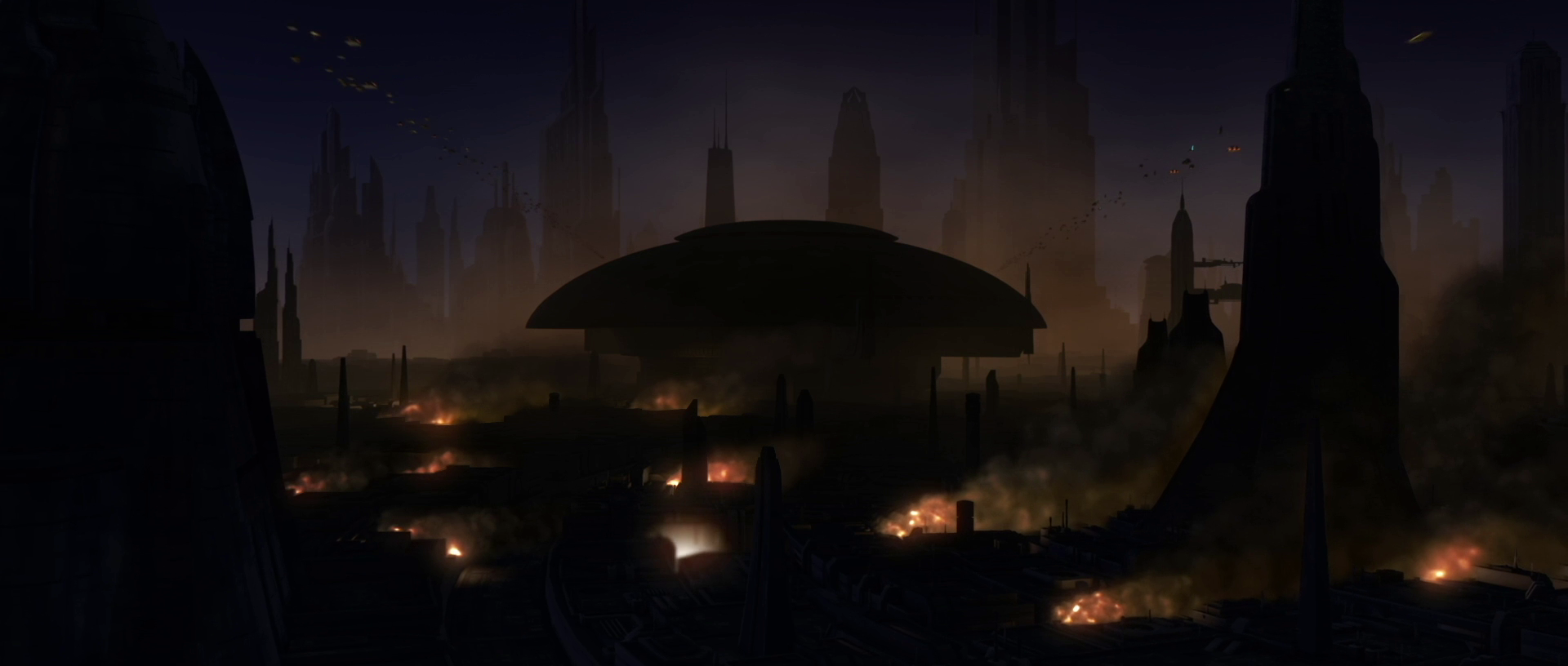
A Separatist terrorist attack disabled power to large sections of Coruscant, including its government district.
The Confederate–Republic peace initiative was disrupted by the bombing of Coruscant's central power distribution grid by planetside Separatist agents. Consequently, the Senate voted to deregulate the banking industry, allowing the Republic to take on additional loans for the purpose of purchasing more clones for its army. Unbeknown to the Senate, the attack was supported by Senators Nix Card and Lott Dod, whose respective organizations, the InterGalactic Banking Clan and the Trade Federation, profited from the Clone Wars.
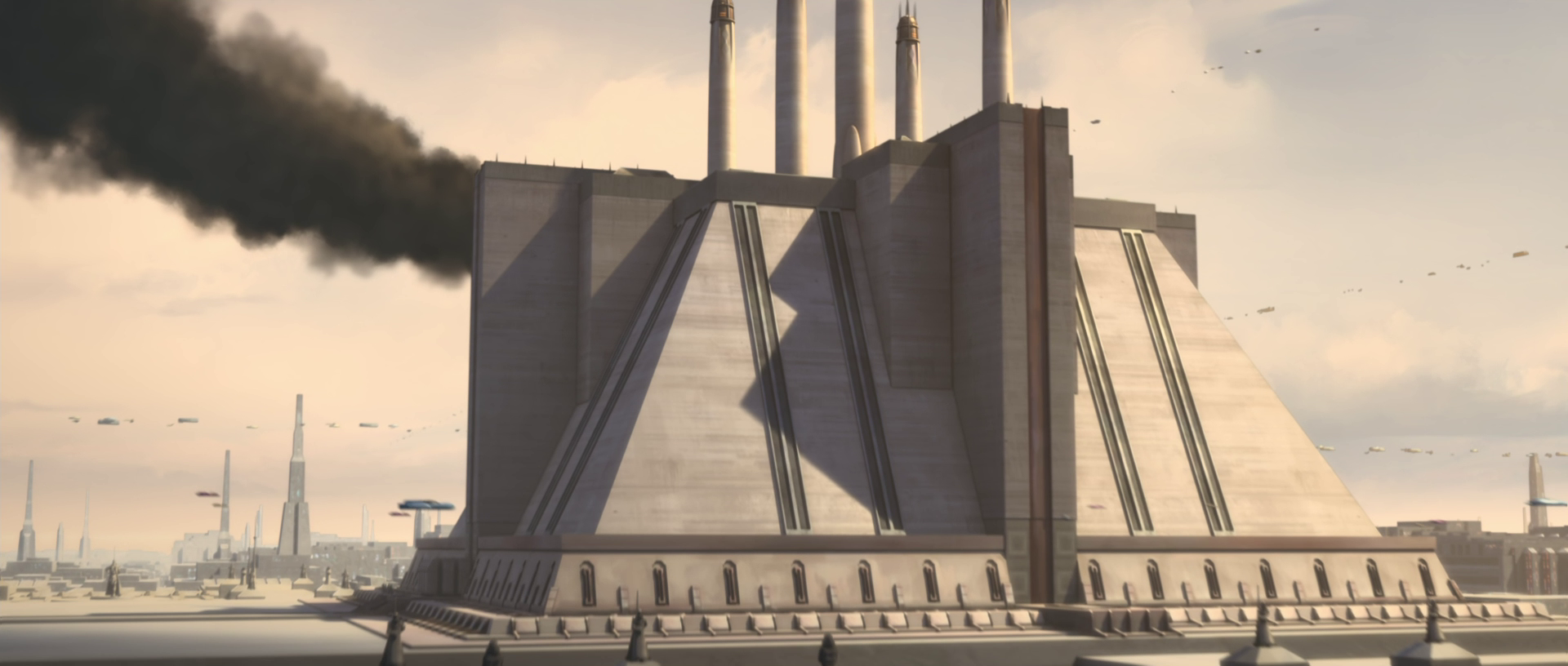
During the late Clone Wars, the Jedi Temple was bombed in a terrorist attack.
Public opinion towards the end of the war, as represented by the citizens of Coruscant, began to turn against the Jedi. Protesters would gather in front of the Temple, blaming the Jedi for the military losses and the Jedi's loss of perspective as keepers of the peace. It was at that time that an explosion occurred at the Jedi Temple docking complex that killed six Jedi and several clone troopers and Temple employees. The investigation by crime scene analysis droid Russo-ISC and Jedi Anakin Skywalker and Ahsoka Tano found that Letta Turmond, the wife of Temple employee Jackar Bowmani, had fed him volatile nano-droids which then exploded, killing Bowmani and causing the bombing at the Temple. Turmond was arrested and held at the Republic Center for Military Operations.
Tano was subsequently framed for the death of Turmond, who was killed by way of the Force. She escaped to the lower levels of Coruscant, becoming a hunted fugitive while seeking to prove her innocence. After the military recaptured Tano, the former Jedi was put on trial for treason against the Galactic Republic. However, the charges against her were dropped when the rogue Jedi Barriss Offee confessed to the crimes that Tano had been accused of. Though she remained on Coruscant, Tano left the Jedi Temple after deciding to not rejoin the Jedi Order.
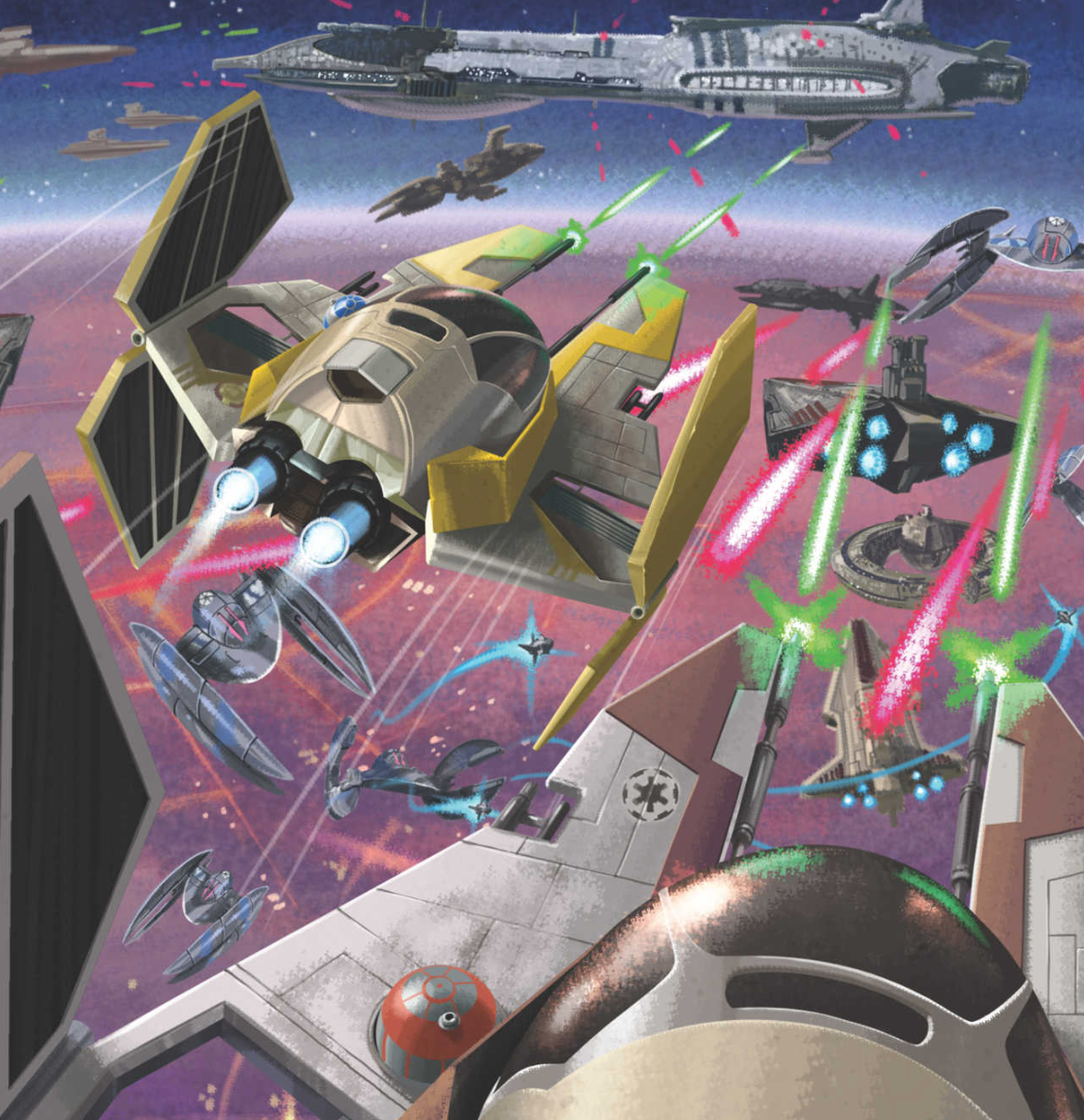
The Battle of Coruscant erupted at the height of the Clone Wars, with Republic forces engaging the Separatists in the planet's stratosphere.
Throughout the Clone Wars, Palpatine had remained a popular leader, remaining in office at the will of the Senate for far longer than his term technically allowed. During this period, Palpatine continued to consolidate and centralize his own power. By 19 BBY, the third and final year of the war, Coruscant's defenses were spread thin. The Separatists had been pushed back to the Outer Rim Territories, and could not risk a direct strike at the heart of the Republic. Coruscanti citizens, used to having the war fought far from the capitol, were just as surprised as the Coruscant Home Defense Fleet when a Separatist assault force launched a surprise attack on the planet. During the Battle of Coruscant, Chancellor Palpatine was captured and taken to the Separatist flagship, the Invisible Hand, where he was rescued by the Jedi Knights Anakin Skywalker and Obi-Wan Kenobi.
After the death of Count Dooku, the Jedi on Coruscant focused their efforts on locating General Grievous, the Supreme Martial Commander of the Separatist Droid Armies. Despite the Republic's success in the Outer Rim Sieges, relations were strained between the Jedi High Council and the Supreme Chancellor. Suspicious of the chancellor's motives, the High Council tasked Skywalker with spying on Palpatine after he had made the young Jedi Knight the Office of the Chancellor's representative on the Council. During the final days of the Clone Wars, Grand Master Yoda and the 41st Scout Battalion departed from Coruscant to defend the Wookiee homeworld of Kashyyyk. Shortly afterward, the High Council dispatched Kenobi and his 212th Attack Battalion to Utapau, the planet where Grievous had been located by Clone Intelligence.
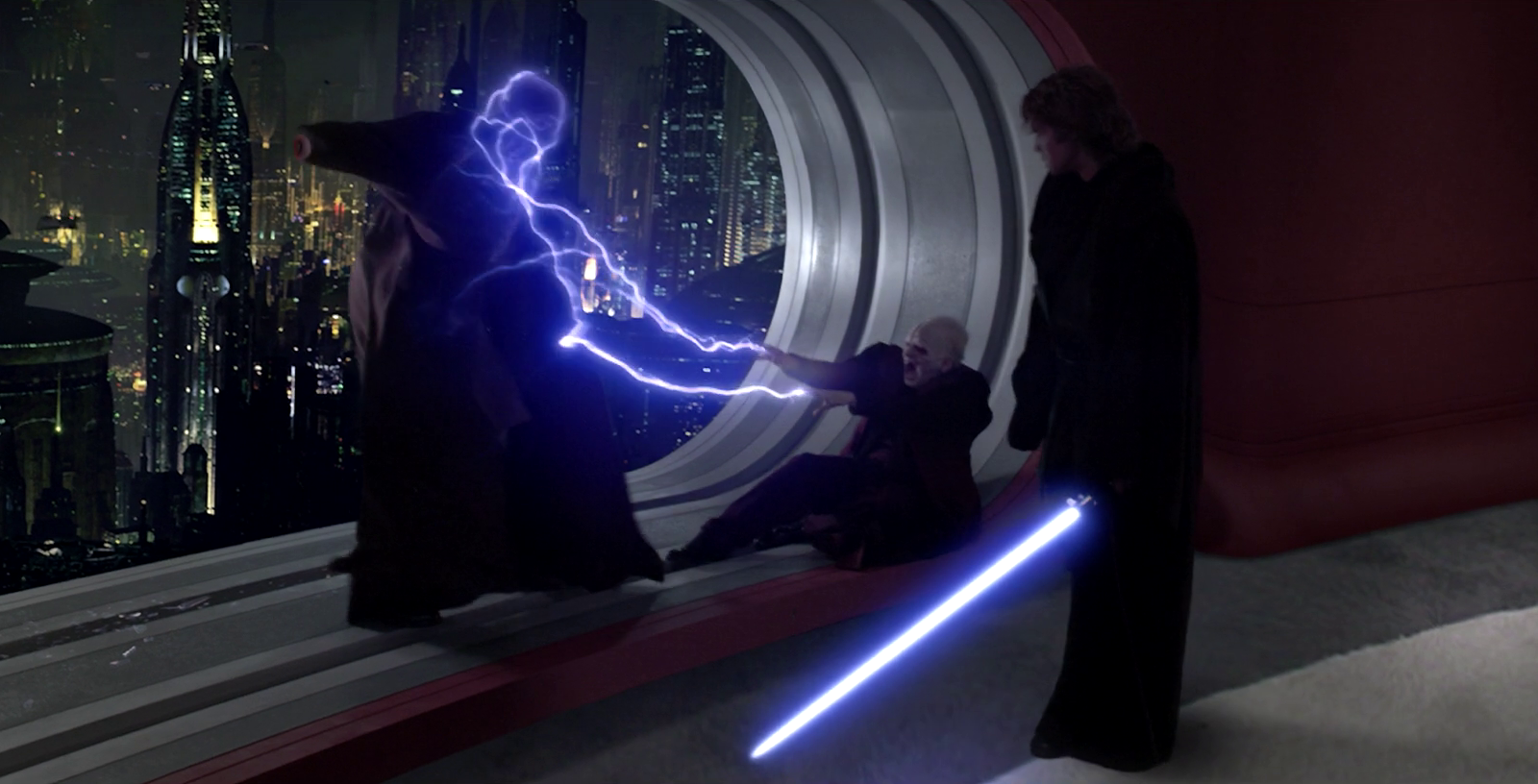
With Anakin Skywalker's help, Darth Sidious killed Mace Windu on Coruscant.
With the Clone Wars nearing its conclusion, Chancellor Palpatine revealed his secret identity as the Dark Lord of the Sith to Skywalker. Acting on Skywalker's report, Jedi Masters Mace Windu, Kit Fisto, Saesee Tiin, and Agen Kolar tried to arrest Sidious. The ensuing lightsaber duel resulted in the deaths of Kolar, Tiin, and Fisto; although Sidious was disarmed by Windu, he succeeded in killing the Jedi Order's champion due to the interference of Skywalker, who believed the chancellor's claims of possessing the power to save others from death. As a consequence, Skywalker renounced the Jedi and assumed the mantle of a Sith as Darth Vader.
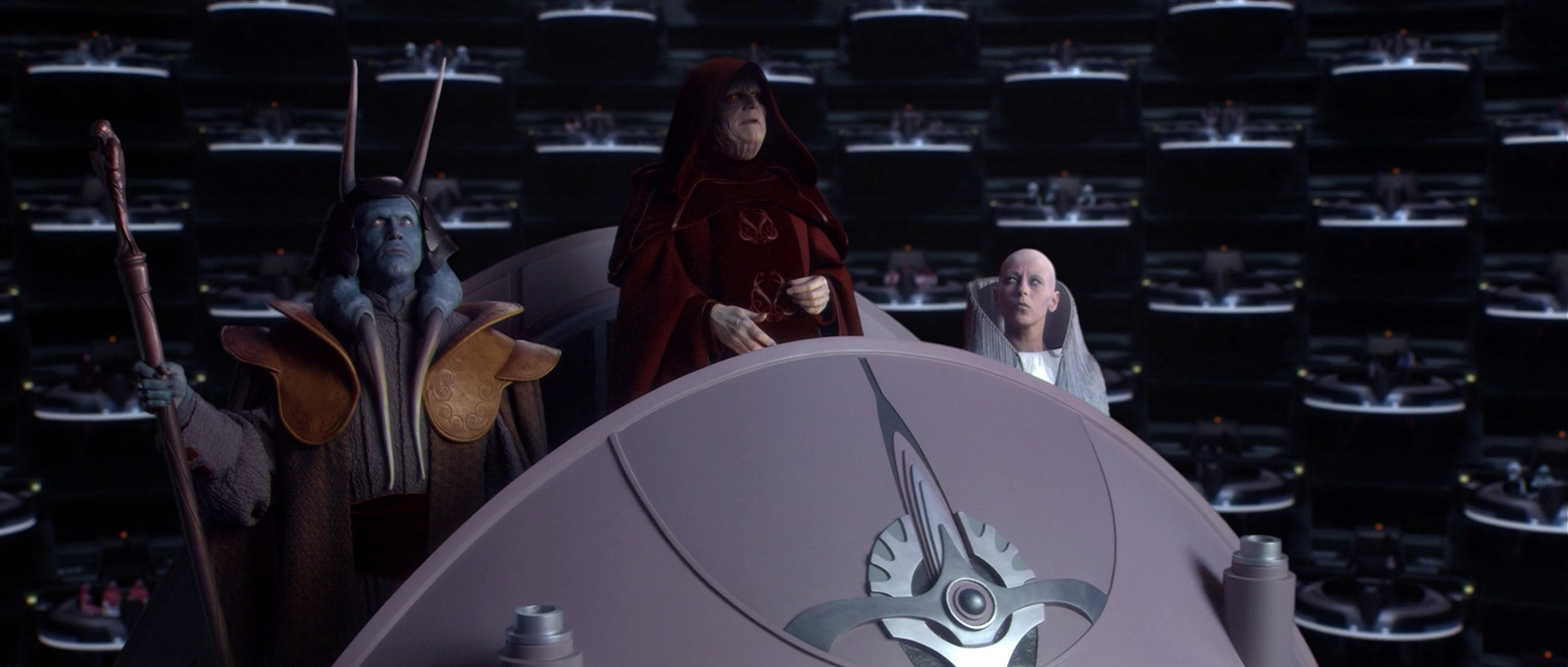
The birth of the Galactic Empire was announced on Coruscant by Darth Sidious at the end of the Clone Wars.
As part of his endgame, Sidious issued Order 66 to the entire Grand Army of the Republic, using hidden inhibitor chips to force the clone troopers into killing their Jedi Generals. On Coruscant, the Great Jedi Purge commenced with Vader and the 501st Legion's siege of the Jedi Temple. With the clone army under his control, Sidious claimed the title of Galactic Emperor after issuing the proclamation of the New Order in a special session of Congress, declaring a new era of order and security under the first Galactic Empire. The Separatist attack on Coruscant had exposed the capital's vulnerability, which, combined with Sidious' allegation of a "Jedi rebellion," compelled the Senate to support the Emperor and his New Order.
Yoda and Kenobi returned to Coruscant in the aftermath of Order 66. After learning of Skywalker's turn to the dark side of the Force, the two Jedi Masters resolved to destroy the Sith. Kenobi left Coruscant to find his fallen apprentice, whereas Yoda remained on the capital to confront the Emperor. However, Yoda failed to defeat Sidious; as a consequence, he exiled himself to Dagobah. Meanwhile, Vader was grievously injured on Mustafar by Kenobi, resulting in his reconstruction on Coruscant as a cyborg.
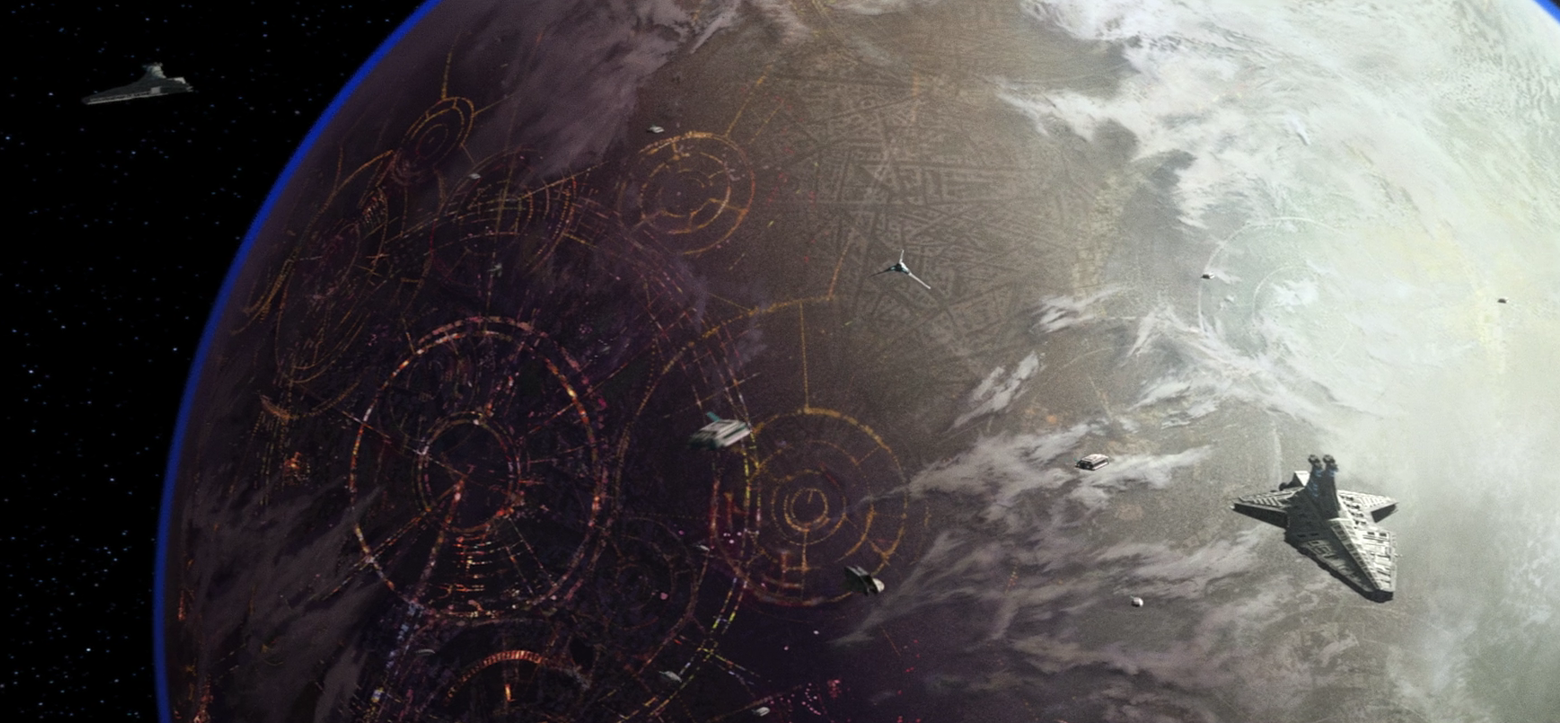
Venator-class Star Destroyers orbited Coruscant during its early days as the Imperial capital.
After Palpatine's accession to power, changes came quickly to Coruscant, formally renamed as Imperial Center, and the Galactic City to Imperial City. The Jedi Temple and its surrounding serene complex became the home of the new Emperor. While the spires of the Temple remained in place, the rest of the structure was heavily remodeled and expanded with sloping facades and block-shaped additions. The entire area was known as the Federal District, with the Imperial Palace forming one point of the so-called supreme triangle. The other two points were the byzantine COMPNOR arcology, which contained the headquarters of the Imperial Security Bureau, and the new Naval Intelligence Agency headquarters, a near-windowless complex which formerly housed the Republic's strategic center. The cityscape of Coruscant changed as well. Buildings were stripped of their elegant Republic dressings in favor of sleek lines and block-like surfaces, and many smaller buildings became engulfed into larger buildings. Some areas changed so quickly that they were not recognizable to those who had seen them only a few years before.
The Empire's policies against non-humans and its tightening control of the population caused unrest, especially among the alien populations of the underworld. The Krrupt Gang kept hold of territory on Level 3726, where they worked to keep even the Empire away. As the Galactic Civil War took shape, the Empire began moving its Mon Calamari population on Coruscant. The aggressiveness of the forced relocations caused rioting to erupt in the Old Market Sector, which was brutally put down by Imperial forces.
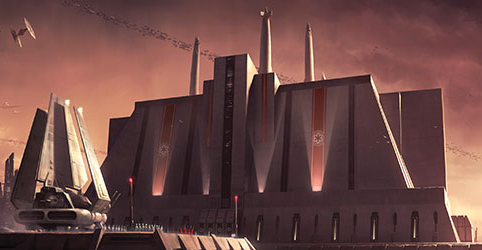
Sidious' accession as Emperor heralded the dawn of a new era for Coruscant and the galaxy.
After the destruction of the planet Alderaan by the Death Star, rumors of what occurred began reaching the Alderaanian population on Coruscant, most of whom lived on Level 3204. Vigils soon became heated and angry when it became known that the Empire had destroyed the planet. For several days, rioting continued until the combined efforts of the Coruscant Security Force and Imperial stormtroopers restored order by firing indiscriminately into the crowds. The crowds, frightened, quickly dispersed. The following day, the Coruscant police arrested anyone caught out in the streets. The day after that, stormtroopers began going door to door stating that Rebel spies had recruited local residents and that Alderaanians had to be taken in for questioning.
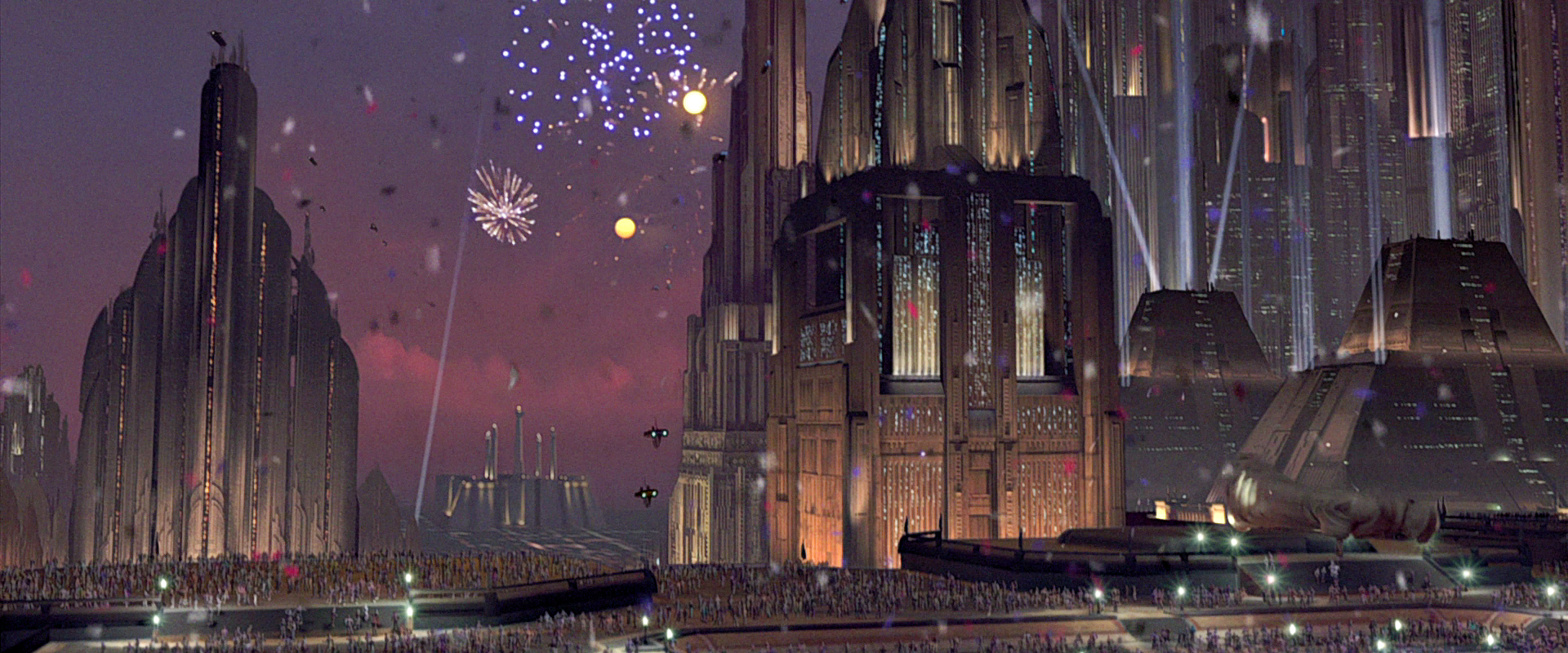
The death of Emperor Palpatine was celebrated by the citizens of Coruscant, who rebelled against Imperial rule.
In 4 ABY, the Rebel Alliance managed to defeat the Empire in the penultimate Battle of Endor. With both the Emperor and his apprentice dead, due to being killed during the destruction of the DS-2 Death Star II Mobile Battle Station, the citizens of Coruscant rejoiced, pulling down statues of Palpatine, overwhelming the stormtroopers on the streets, and setting off chimes and fireworks. Police forces on speeders quickly entered the plaza and opened fire on the crowds without warning, killing many who were present. Present Coruscanti erupted into full-scale rioting. Blaster fire and fighting soon erupted across the capital between Coruscanti and the Imperial security forces.
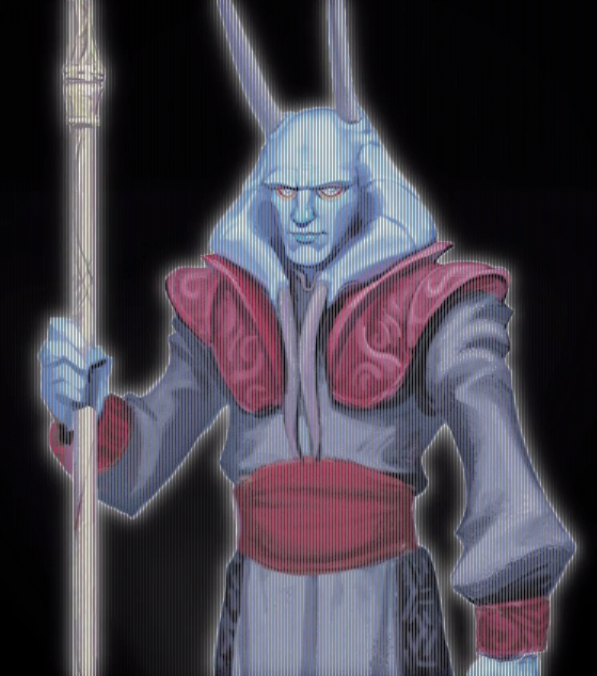
Grand Vizier Mas Amedda struggled to maintain control over Coruscant as the Empire crumbled around him.
In the ensuing months the New Republic was formed and re-established the Galactic Senate on Chandrila. Meanwhile, Coruscant dissolved into a true state of civil war, with some sectors entrenching themselves with Rebel resistance fighters, while other sectors actively fought against their neighbors and supported the Imperial forces. As the Empire fractured all over the galaxy, Grand Vizier Mas Amedda took control of Imperial forces on Coruscant and the Coruscanti government. However, the Imperial Navy withdrew support from the throneworld as Fleet Admiral Gallius Rax refused to allow Grand Admiral Rae Sloane, the figurehead of the Navy, to send reinforcements to the planet. Rax, leader of the Shadow Council that secretly guided the Empire in its final days, saw the planet as representing the "decay" that caused the Empire's downfall.
In this vacuum, the Imperial Security Bureau was left to coordinate Coruscant's Imperial forces. Grand Vizier Mas Amedda remained the planet's administrator and de-facto head of the Empire, but held no real power. The ISB established a nominal blockade around the planet utilizing ISB spaceships and coordinated the efforts of present security forces and stormtroopers. The Verity and Federal District were heavily fortified with checkpoints and barricades. Coruscant skylanes were diverted, and ISB crafts flew on patrol. Smoke rose from damaged vehicles and buildings as a fierce guerrilla war consumed the entire planet. Amedda, in despair and desperation, sought to turn himself over to New Republic Chancellor Mon Mothma and Princess Leia Organa. However, they refused to take him prisoner, instead insisting that he find a way to capitulate the Empire and sign a full surrender.
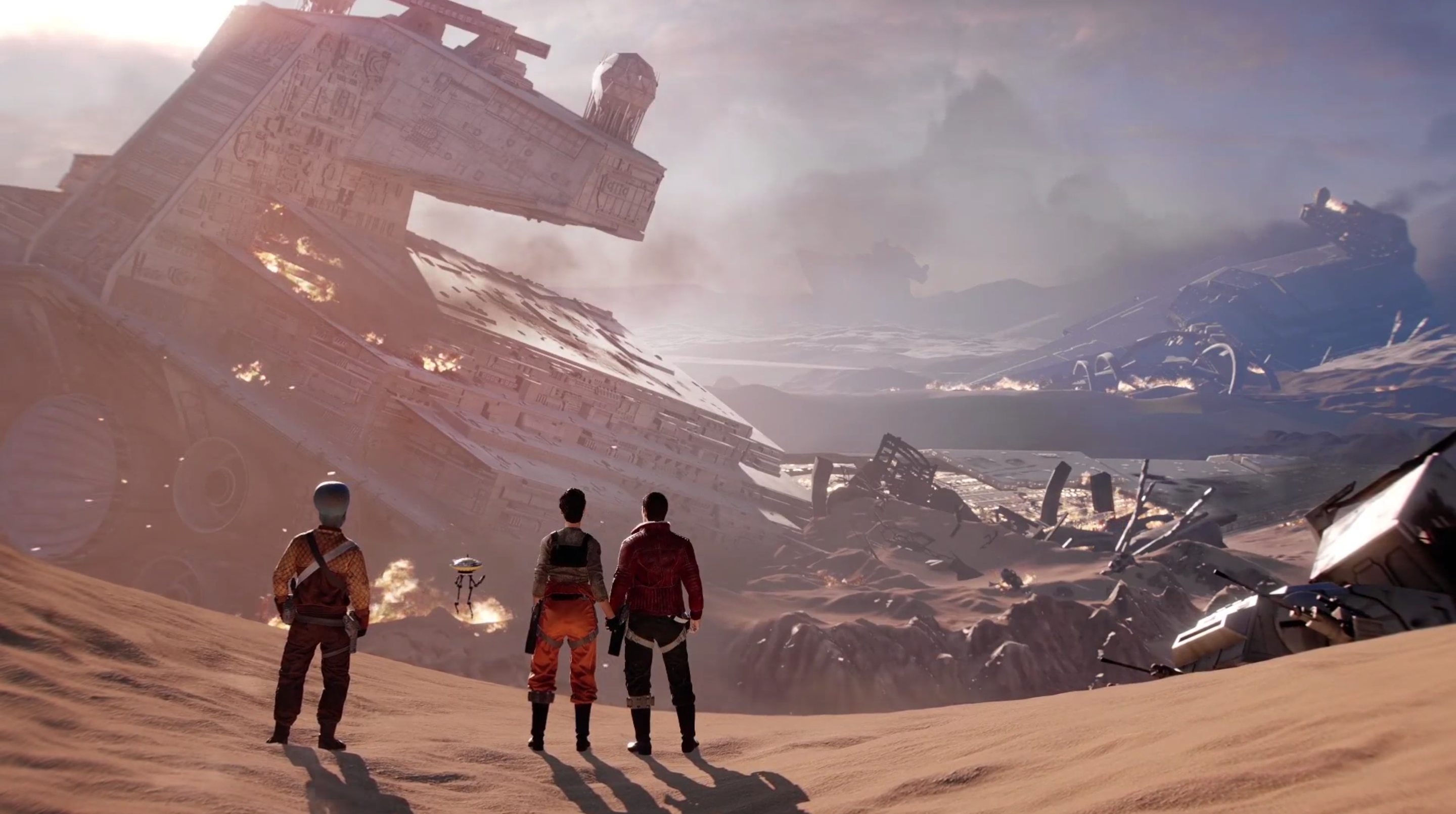
Following the Battle of Jakku, the Galactic Empire ceded control of Coruscant to the New Republic.
By the time of the Battle of Jakku, Grand Vizier Mas Amedda was kept under house arrest by Counselor to the Empire Rax at the Imperial Palace. There, he was forced to make propaganda broadcasts and was treated like a virtual captive. Later, he was rescued by members of a child resistance group known as the Anklebiter Brigade, who had initially come to assassinate him. Amedda managed to persuade the child resistance fighters to help him escape so that he could end the Galactic Civil War. After emerging from hiding, Amedda contacted Chancellor Mothma to surrender. Following the signing of the Imperial Instruments of Surrender and the Galactic Concordance on Chandrila, the Empire surrendered to the New Republic and ceded Coruscant over to the fledgling galactic government with Mas Amedda being permitted to form a provisional government on Coruscant, along with Republic observers to ensure that it remained powerless under a figurehead leader. Following the Imperial surrender, weeks of celebrations took place in the streets and rooftops of Coruscant as the population celebrated the end of Imperial rule on the planet.
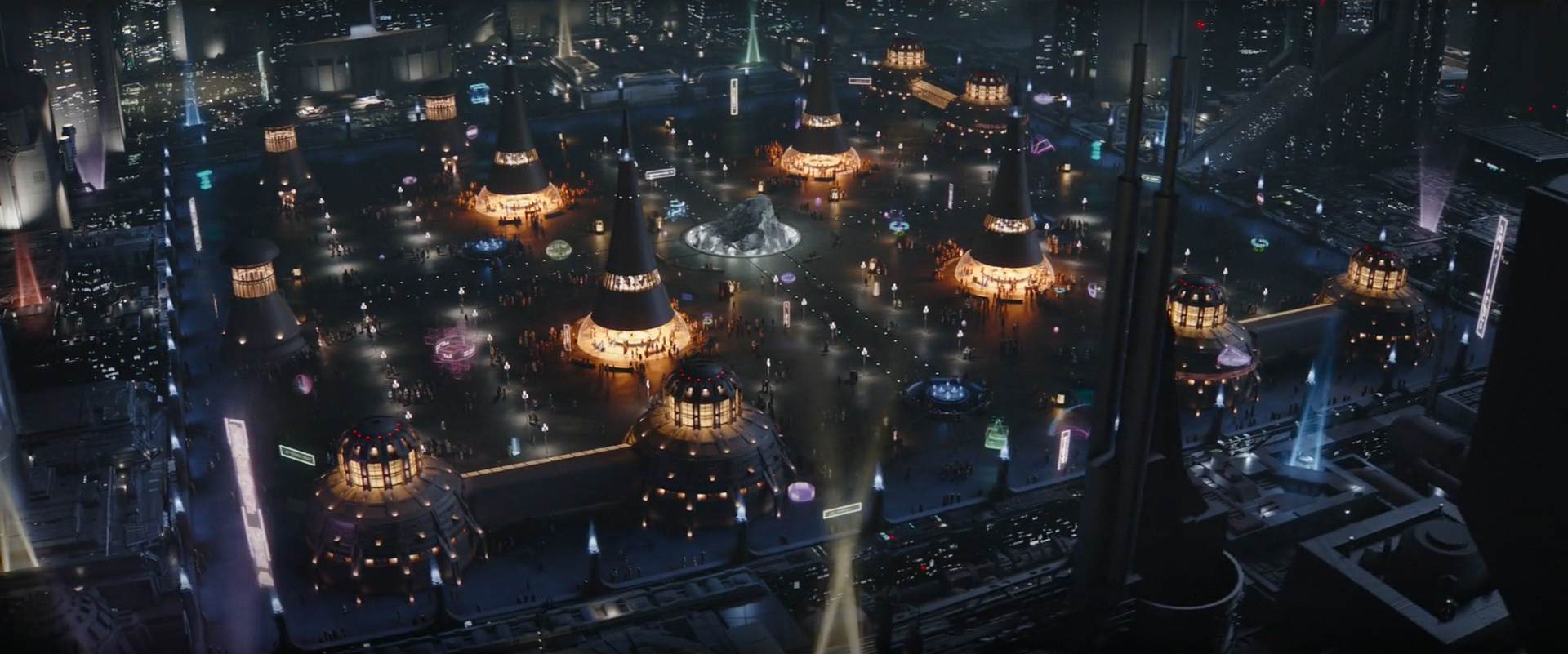
While no longer the focal point of political power, Coruscant retained its historic prestige as one of a handful of city-planets in the galaxy.
With the Galactic Civil War concluded, the New Republic sought to reshape galactic politics in an effort to both prevent the abuses of the Old Republic and bring in disaffected worlds that had seceded from the Republic prior to the Clone Wars. To accomplish this, the new Senate decided that all worlds would have an equal say in their government, and as such all worlds had an equal chance of hosting the New Republic's capital on a rotating basis, rather than simply remaining on Coruscant alone. Still Coruscant remained a populous world, home to a trillion permanent residents, and was still referred to as "the center of the galaxy" during the New Republic Era.
The New Republic Defense Force maintained a presence on Coruscant, providing security and structure, while overseeing the decommission of warships from both the Imperial Navy and the Alliance Fleet. Inoperable Imperial-class Star Destroyers were disposed in salvage yards such as the Shipyard Depot on Coruscant.
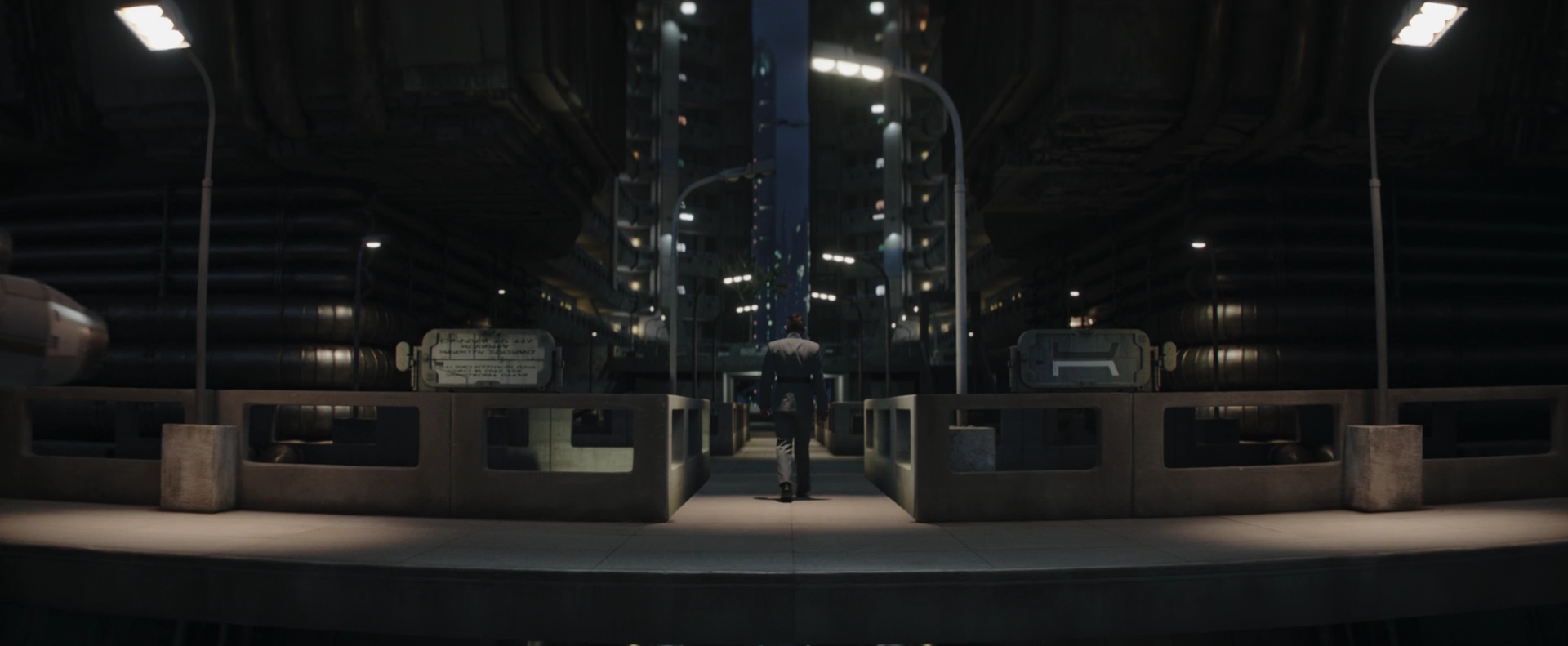
The New Republic Amnesty Program assigned former Imperials to Coruscant where they could serve the new government.
After the Galactic Empire's defeat, captured Imperials were granted the chance to join the New Republic. As a result, programs like the Re-Integration Institute and the New Republic Amnesty Program were created to facilitate a former Imperial's assimilation into the new regime. The Amnesty Program consisted of former Imperial officers and scientists who, after spending time in the Re-Integration Institute, received accommodations in Amnesty Housing on Coruscant. Amnesty Scientist L52 was assigned to work in a New Republic skyscraper where Imperial technology was archived and destroyed. Amnesty Officer G68 worked in the same building as Colonel Tuttle from Requisitions. L52 was arrested by New Republic soldiers around 9 ABY, having left the program's designated perimeter to acquire equipment in the hope of continuing his cloning research, despite its prohibition by the Coruscant Accords.
Late that year, General Hera Syndulla was summoned to Coruscant where the New Republic Senate Oversight Committee would decided whether or not to permanently suspend her command due to her disobeying orders.
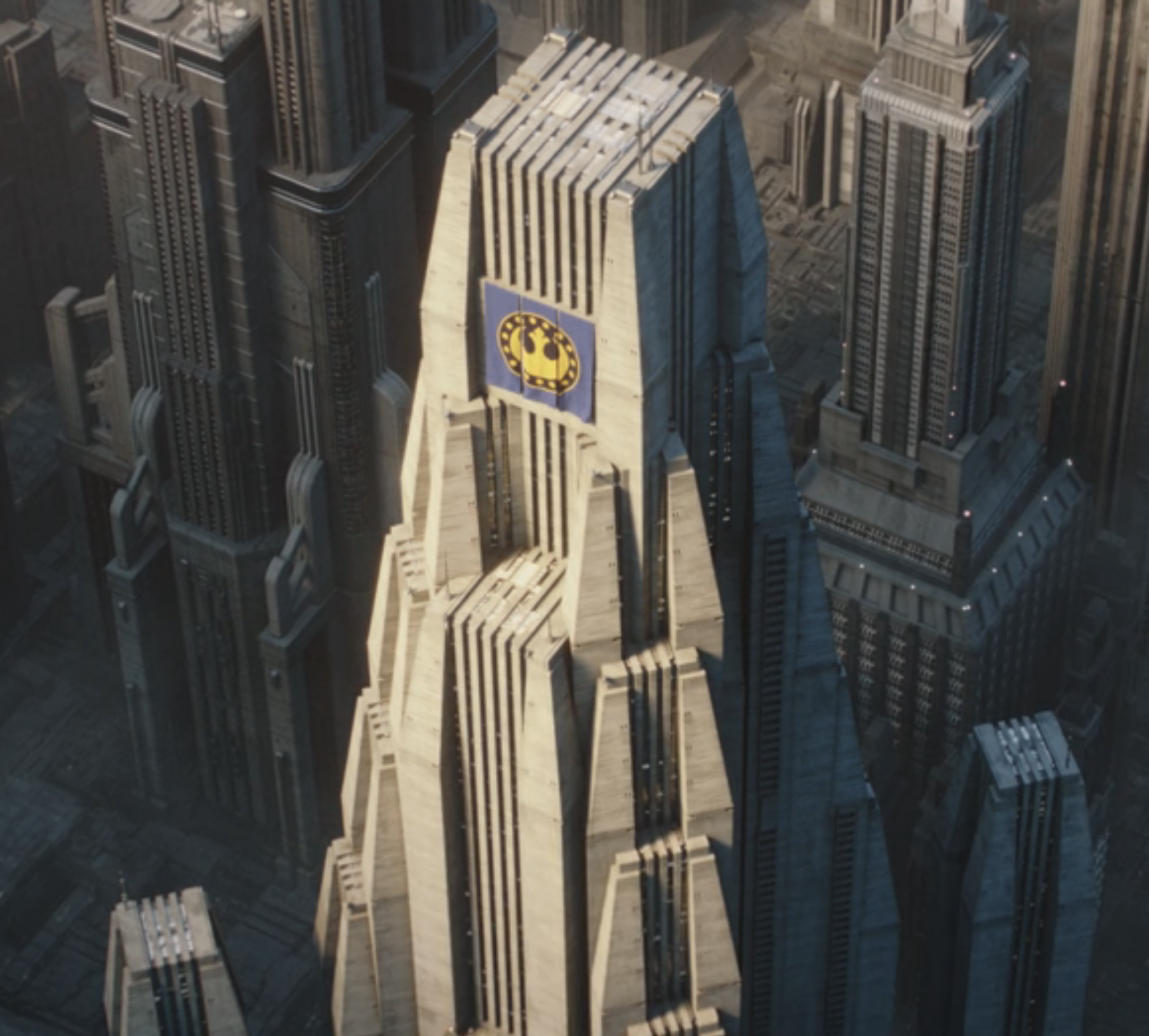
After joining the New Republic, Coruscant was counted among the Centrist worlds that advocated for a stronger galactic government.
Coruscant ultimately joined the New Republic as a member world, becoming part of a political coalition known as the Centrists. The faction that Coruscant was associated with lobbied for centralized rule akin to the system that defined the Old Empire. Their views were diametrically opposed to that of the Populists who sought to limit the galactic government's involvement in the affairs of its constituent worlds.
By 28 ABY, Coruscant was represented in the New Republic Senate by senior senator Arbo and junior senator Orris Madmund at the time of the Amaxine warrior crisis. By then, the Core World Hosnian Prime had been designated as the capital of the New Republic. Senator Arbo was a known Centrist, war hawk, and supporter of the New Republic Defense Force. After the Senate's failed attempt to elect a First Senator, the Centrists seceded from the New Republic and formed the political branch of the First Order.
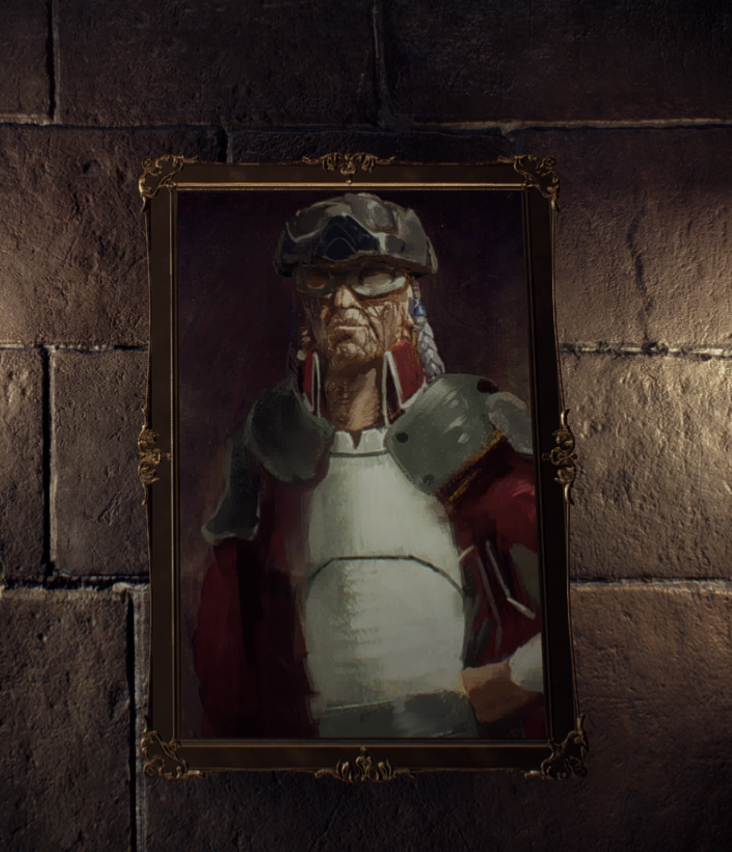
Lawlessness and gang warfare became commonplace on Coruscant, a fate lamented by Hondo Ohnaka.
Despite being a part of the New Republic, the planet actually fell under the control of criminal syndicates after the Empire's fall. By the time following the Battle of Crait in 34 ABY, even the respectable areas of Coruscant were roamed by gangs. Gangs fought a bloody conflict for control of the glittering world's districts. Tourism to the once-galactic capital all but vanished, and, for an individual to be safe, they needed to afford protection like droids and armed guards. Accordingly, the city world was not a symbol of galactic possibilities. Instead, it represented the disturbing realities of the galaxy's current time period.
The pirate Hondo Ohnaka, who was saddened by Coruscant's current state, included the planet in his book titled Galactic Explorer's Guide. Within the book, RA-7 protocol droid DK-RA-43 described Coruscant's fall from grace into lawlessness as one of the greatest tragedies of their current era. In 35 ABY, Coruscant was in open rebellion against the First Order.

Coruscant was home to a cosmopolitan society as diverse as the galaxy that it once ruled.
Although Coruscant was believed to be the homeworld of the human species, the Coruscanti were as varied as the galaxy itself, especially as one journeyed below the surface of the skyscrapers and into the underworld. Trillions of beings resided on the planet, and humans made up 68% percent of the population. According to Qui-Gon Jinn, there were people from a thousand worlds living on Coruscant. Th'er, the Priestess of Wood from Bri'n, disdained Coruscant's planet-wide urban sprawl as an "abomination." Nevertheless, Jinn encouraged Th'er to take advantage of its diverse population, noting that there were many individuals on Coruscant whose worlds faced adversities similar to that of Bri'n.
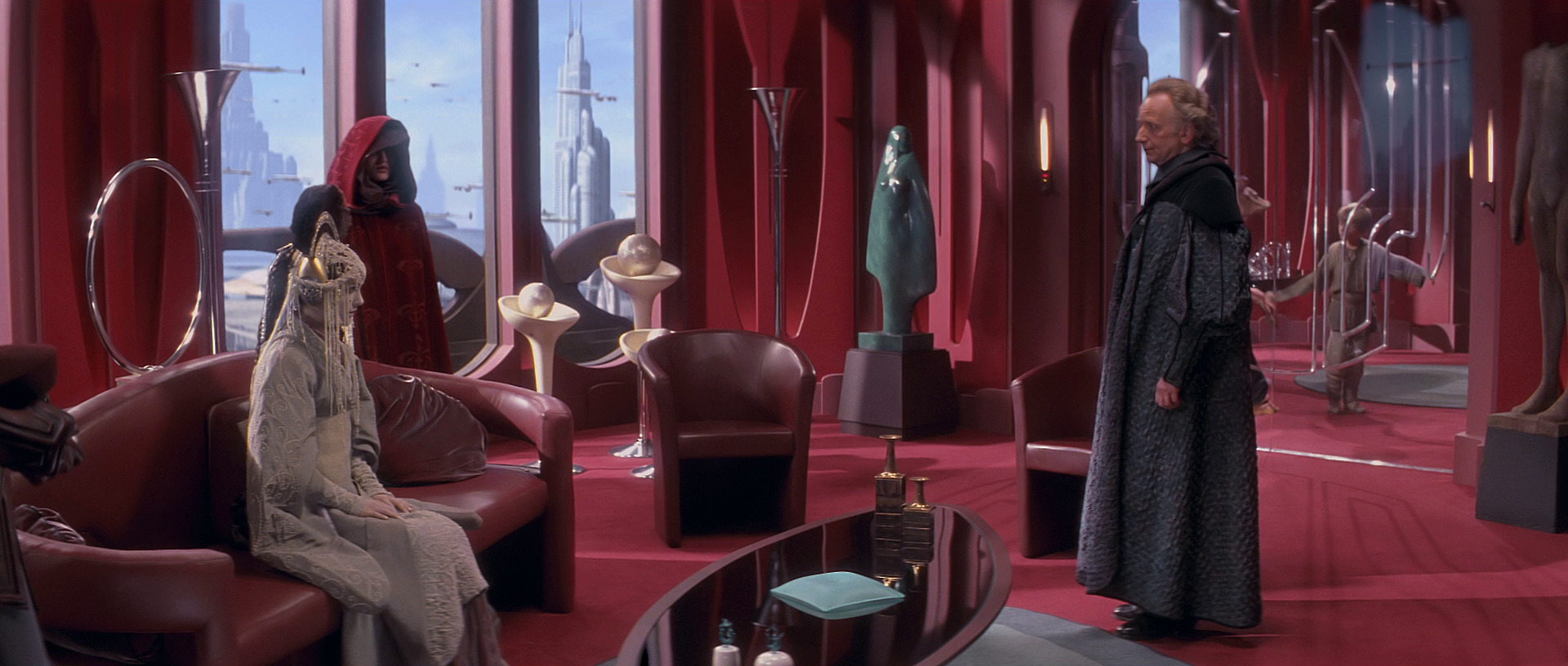
Republic politicians resided in the more affluent upper levels of Coruscant.
As the center of galactic power, senators and delegates of every represented planet had a residence on Coruscant. From there they would spend their days either working in the Senate or hosting events such as parties and political meetings. Additionally, the planet served as the home of large communities of various species, some who rarely returned to their original homeworld. Many of those communities of species that were not human resided in the lower levels of the city. With the formation of the Empire, even the humans whose home planet had fallen out of favor with the Imperial government, such as Alderaan, were forced into enclaves in the underworld.
On the surface levels of Coruscant, skyscrapers served as homes and businesses for the wealthy, powerful, and politically connected. They were ferried by private speeder or an air taxi from one tower to the next or to the various theaters, clubs, operas, and other entertainment areas of Coruscant. Some journeyed to the surface street levels or Coruscant's surface parks to conduct clandestine meetings or to mingle in the crowds of people that streamed through the walkways of the residential and commercial areas. Among the rich and powerful of the planet were the Supreme Chancellor of the Republic and members of the Galactic Senate.
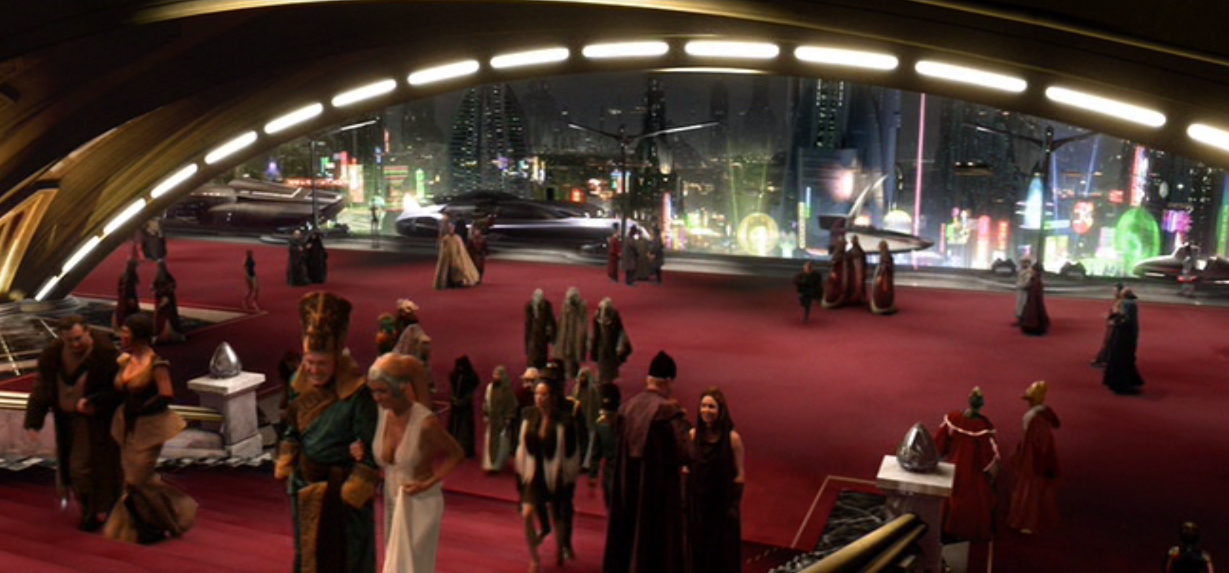
The last generation of Republic citizens were more interested in leisure activities than galactic politics.
The influential and wealthy of Coruscant thrived in lavish lifestyles, attending meetings and social gatherings in highrise apartments, dining in fine restaurants overlooking the city, partying in the entertainment districts, and viewing large scale shows in theaters and operas. Even as the Republic decayed, the Clone Wars raged on, and the average citizen became disenfranchised, Coruscant's wealthy continued their lifestyle. The propaganda artist Janyor believed that this generation's lack of focus on galactic politics contributed to the decline and fall of the Republic.
One model of ship, the Coruscant Freighter, shared its name with Coruscant, where it was often used. On the streets of the city and in the shadows of skyscrapers teemed the planet's blue collar working population. Many lived in the various housing blocks of the surface structures in relative comfort though not nearly as extravagant as the planet's wealthy and powerful. Many worked on the upper and lower surface levels or enjoyed the entertainment and restaurants that were more catered to their financial abilities.
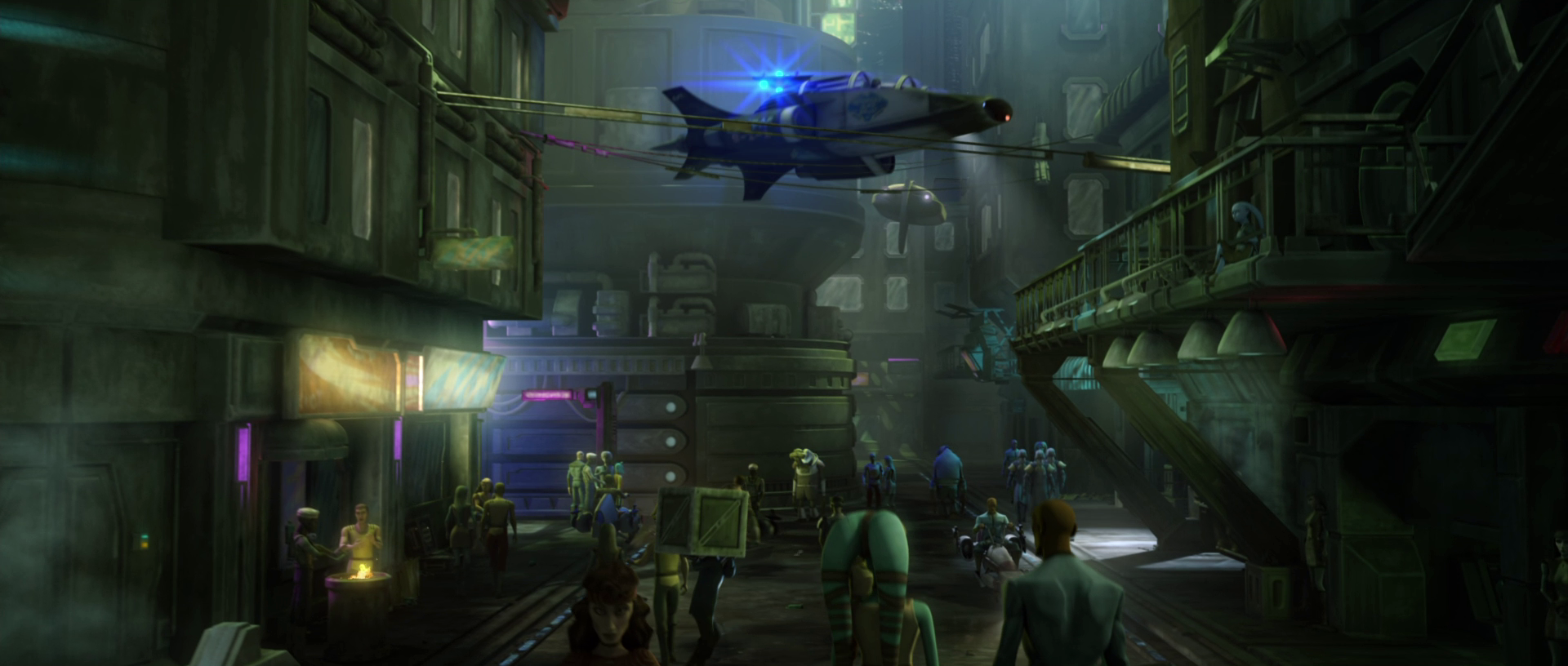
The inhabitants of Coruscant's lower levels lived in impoverished conditions.
Below the housing blocks and surface levels was the population inhabiting the Coruscant underworld. A term used to describe both the thousands of levels underneath the surface, and, Coruscant's criminal population, the underworld was home to millions of the planet's population who were too poor to move upward or were hiding from the attentions of the authorities. The citizens who lived here rarely if ever during their lifetime saw the surface of the planet. Living between vast buildings and infrastructure that supported the surface, they carried on their lives at the mercy of the violence, decay, and constant threat of death.
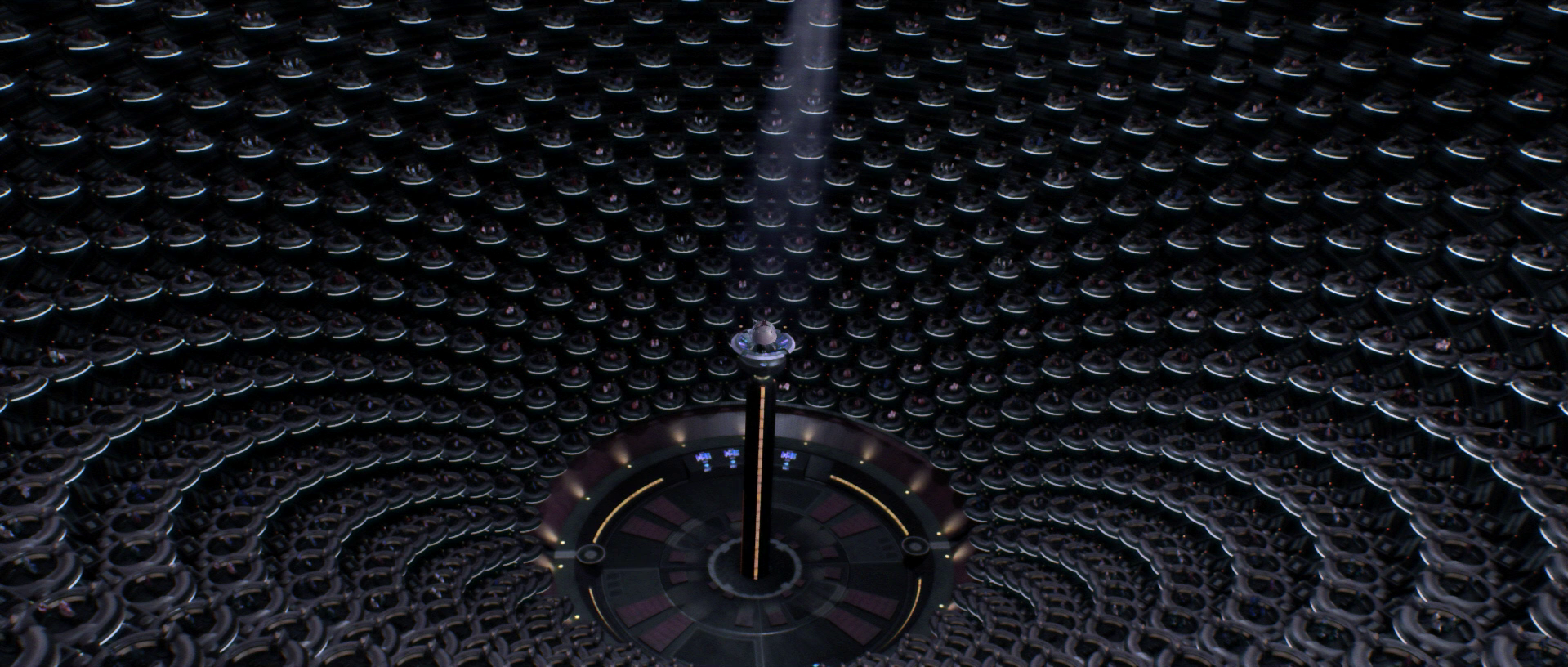
Coruscant was the seat of the Galactic Senate, making it home to thousands of senators from across the galaxy.
Coruscant, as the center of the galaxy, thrived on the rule of government. It served as the capital of the Republic which kept the peace and prevented a major war in the galaxy for over a thousand years. Under the Republic, the Chancellor and the Senate had a direct influence on the planet's governance. Major events that affected the Republic equally affected Coruscant. In its last years, the Republic's Senate became corrupt, bloated, and ultimately ineffectual, though some continued to fight in the belief of its ability to govern.
With the formation of the Empire, the Senate transitioned into a limited role, providing council and legislation but ultimately at the power of the Emperor. As Coruscant's government services were strained, the Imperial Senate moved to have each senator open citizen assistance offices that would supplement the work of the local government. While the goal was to primarily assist the members of each senator's homeworld living on Coruscant, the assistance offices were open to help all Coruscanti.
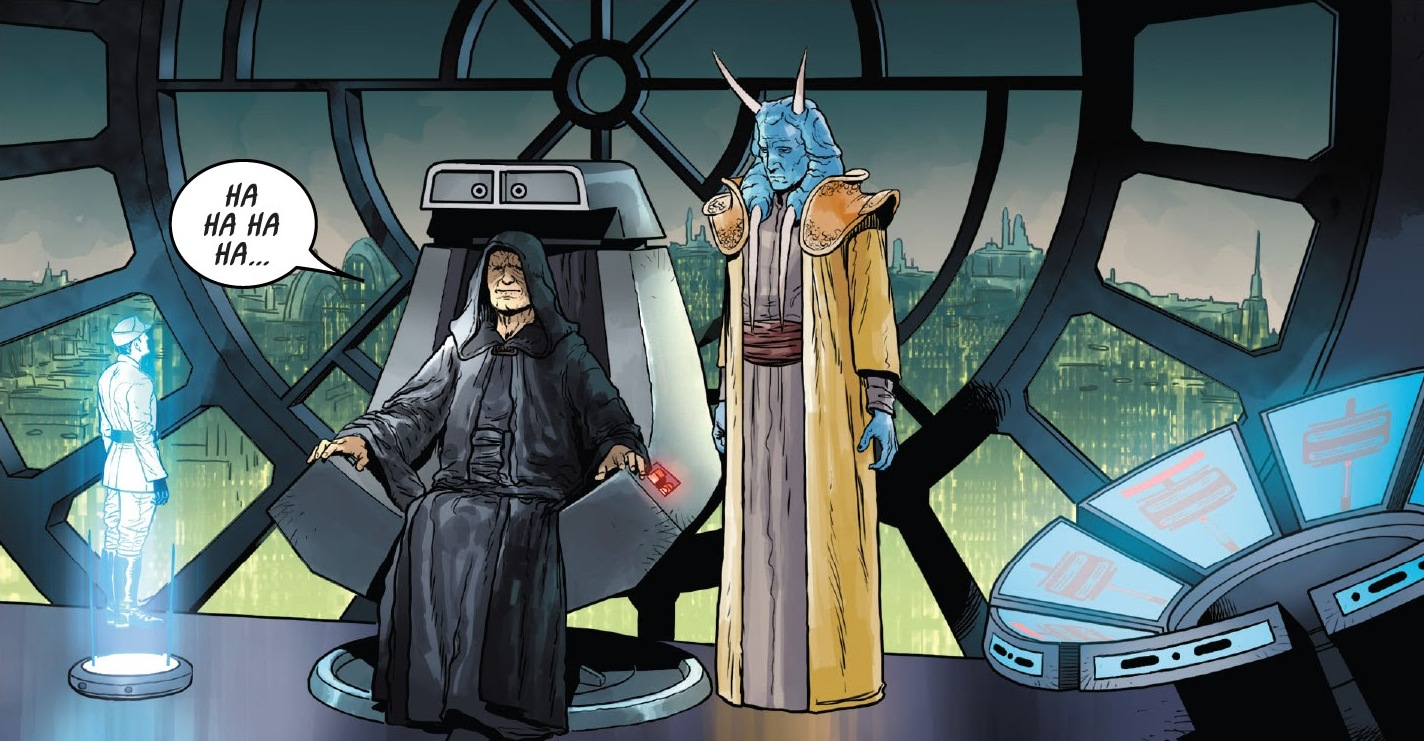
After the Republic fell, Coruscant retained its status as the seat of galactic power under the Emperor's reign.
At the height of his power, Palpatine disbanded the Senate altogether and gave what little power they had left to the regional governors. At the end of the Galactic Civil War, the New Republic installed a provisional government over Coruscant led by the former Imperial Grand Vizier Mas Amedda. However, the New Republic did not establish its government on Coruscant, choosing instead to rotate the capital among the various member worlds. Under the New Republic, Coruscant was represented by a senator and junior senator, but the planet had come under the control of crime syndicates.
Epidemic outbreaks at the starports of Coruscant were controlled by the Coruscant Health Office. Coruscant was policed by the Coruscant Security Force, which utilized police droids on the upper levels together with sentient officers and detectives, and the burly underworld police who patrolled in the cutthroat environment of the lower levels. The Coruscant Ministry of Ingress handled the flow of immigration to and from the planet, and the Galactic Republic Customs of Coruscant office monitored cargo transports.
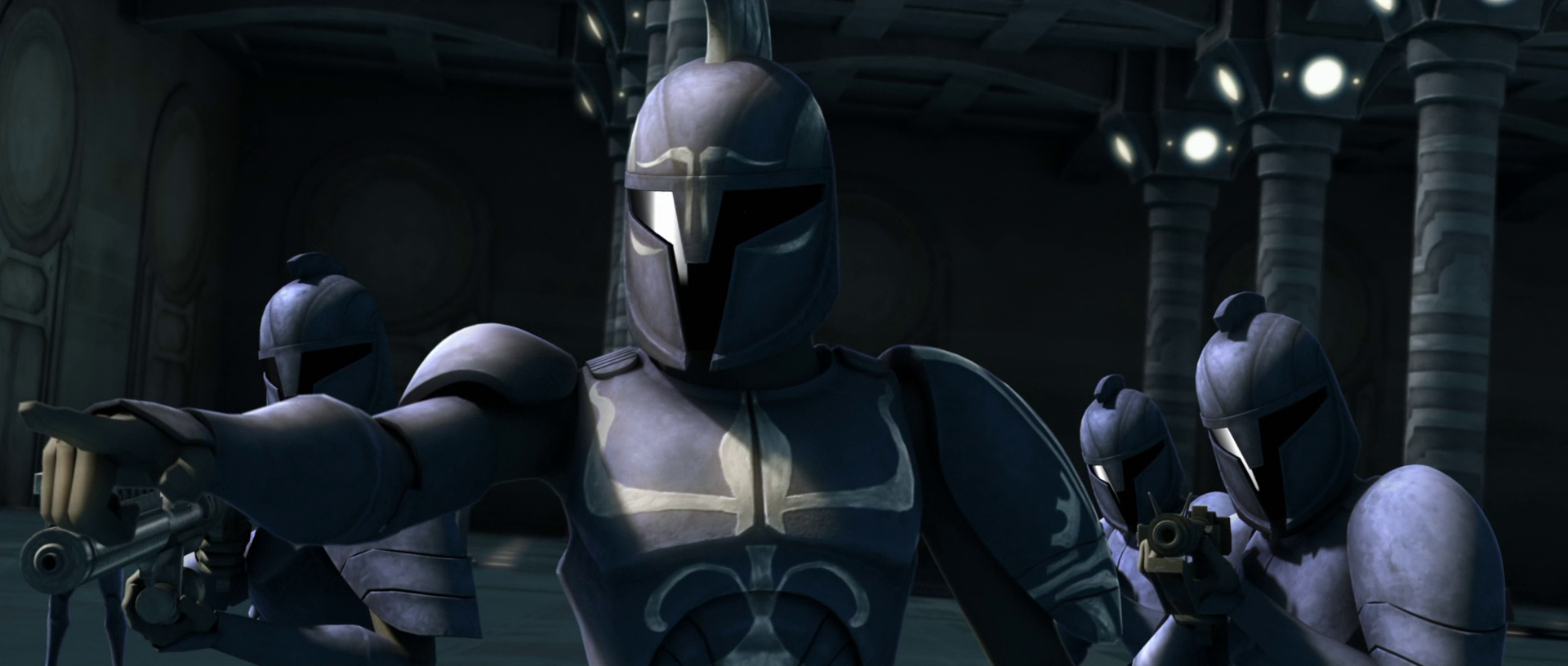
The Senate Guards were stationed on Coruscant due to their role in government security.
The Senate had its own protectors, the Senate Guard. Serving under a long tradition, the Senate Guard was a reminder that though the Republic did not have a standing army, it was not defenseless. As the Clone Wars erupted, the clone troopers of the Coruscant Guard worked as peacekeepers and military police, providing a constant reminder of the expanded power of the government, specifically Palpatine. With the formation of the Empire, the Coruscant Guard and Imperial stormtroopers took over the functions of the Senate Guard, with stormtroopers directly responsible for security on the planet, alongside the civilian Coruscant police.
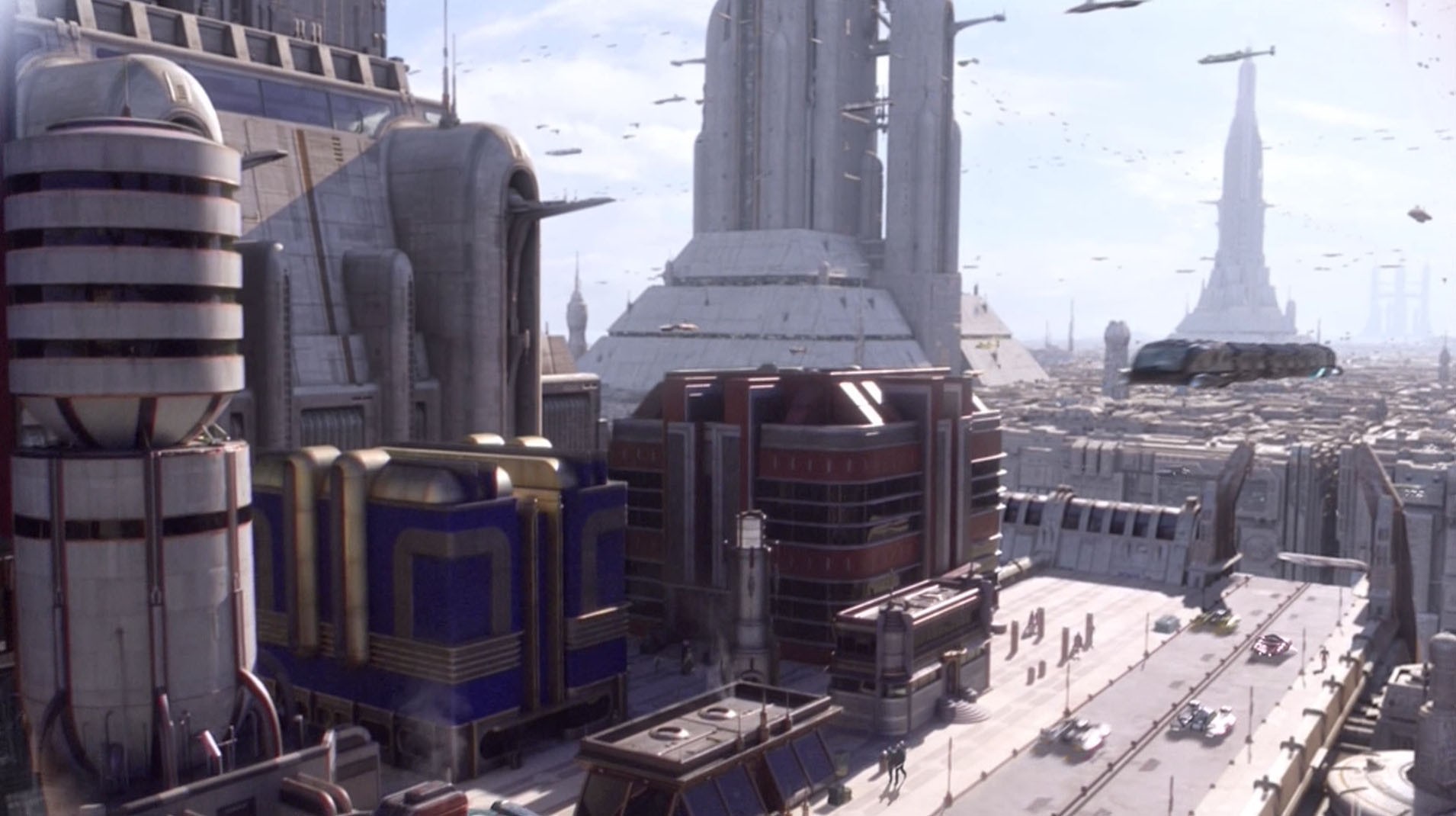
One of Coruscant's many sectors was a dilapidated industrial area known as CoCo Town.
CoCo Town was a dilapidated industrial area of Coruscant. Home to mostly hard-working laborers, CoCo Town was located on a surface area of the city. The area, however, was not as run down as other heavy industrial surface districts and contained relatively well-maintained streets, speeder lanes, and a shuttle bus route. On one of the main streets built on top of the urban blocks was an eatery called Dex's Diner. Owned and operated by Dexter Jettster, a Besalisk with a colorful background, it served mostly hard workers from the area. The diner offered home-style cooked meals and freshly brewed ardees. Jettster worked as the cook and employed two waitresses, Hermione Bagwa and her droid partner, WA-7. Shortly before the Clone Wars, Jedi Knight Obi-Wan Kenobi came to Dex's Diner to see if his old friend Jettster could identify a poisoned dart. Jettster identified it as originating from the planet Kamino, which he knew of from his days as a prospector.
During the civil war that erupted after the Emperor's death, CoCo Town became an epicenter of the fight between rebel and Imperial forces. The fighting saw the formation of the so-called Anklebiter Brigade, a group of youths familiar with the underground maintenance systems, who would use them to sneak behind Imperial lines and disrupt their abilities to fight.
Level 2046 was a middle level in the city. Home to a thriving community of sellers and industrialists, the sector housed dozens of shops and even a meat packing plant. Yet, there was also many impoverished citizens and desperate people who lived on this level. By the Imperial Era, the economy of the area had started to decline, even with the Empire's ruthless crackdown on crime. The increased oppression and protection racketeering from troopers hurt many of the businesses there, and corrupt politicians, such as Senator Sejan, would use the level as a way of increasing the financial power. This level also featured at least one Desi's Noodles, a common food chain on the planet.
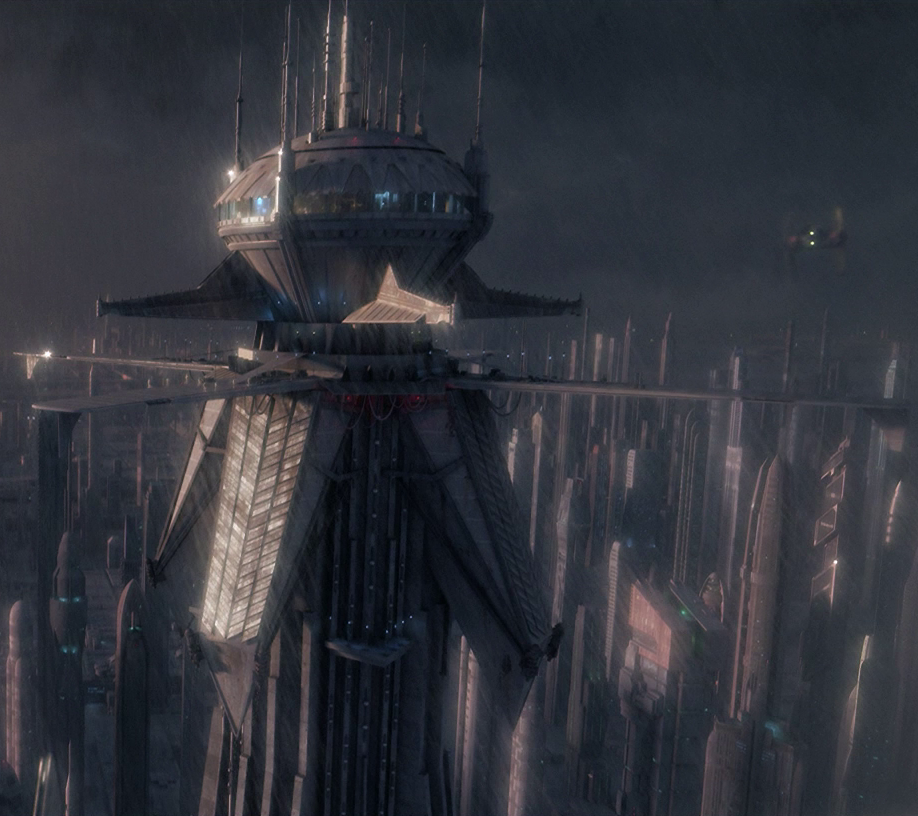
The Grand Republic Medical Facility was a Republic Military treatment center, yet also a secret lair of the Sith.
The Grand Republic Medical Facility was a tower built to serve as a treatment center for badly injured Republic soldiers. The building was heavily guarded and had defensive shields, an independent power supply and was armored to where it could withstand a siege. The facility provided treatment to patients from all over the galaxy and boasted cutting-edge techniques in surgery and biomechanical reconstruction. The heavy fortifications and benign front appealed to Palpatine, and towards the end of the Clone Wars, he began using the lower levels of the facility to store Sith artifacts and as a meditation area, access to which was prevented by the Red Guards.
Jedi General Shaak Ti and Doctor Nala Se escorted the Advanced Recon Commando CT-5555 "Fives" to the Grand Republic Medical Facility as part of their investigation into the actions of CT-5385, the clone trooper who prematurely executed Order 66. Chancellor Palpatine confronted Fives in the facility, revealing his true nature. Fives fought back against the Red Guards and escaped the facility, though he was eventually located and killed by the Coruscant Guard. After ending Fives' threat to Palpatine's plans, the Medical Facility was temporarily closed, and Palpatine used the opportunity to move several larger secret Sith artifacts into the tower from a building in the Works. However, the medical capabilities remained operational and were used to build the life-sustaining suit for Darth Vader after his fateful duel with Obi-Wan Kenobi. The Sith artifacts inside the building fueled Vader's recovery and hate.
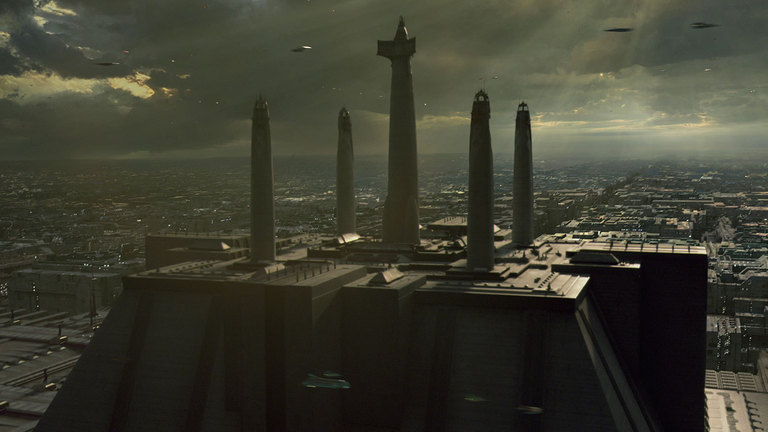
The Jedi Temple was part school, part monastery, and the home of the Jedi Order on Coruscant.
As the galactic capital, Coruscant was also home to the Jedi Order, guardians of peace and justice in the galaxy. An order of Force-sensitives, the Jedi Knights served the Republic for thousands of years as keepers of the peace. Their home was the Jedi Temple. Built on a plain of low lying urban blocks, the Jedi Temple was easily recognizable on the Coruscant cityscape with its distinctive five spires. Part school and part monastery, the Temple was the hub of all Jedi activity throughout the galaxy. In one of the spires sat the Jedi High Council, led by the Grand Master of the Order, which directed the actions of the Jedi and served as advisers to the Senate and Chancellor.
The Temple held a large lobby and chambers with statues of famous Jedi and also contained numerous facilities including hanger bays for starships and speeders utilized by the Jedi, sleeping and living quarters, rooms for meetings and instruction, a medical facility, prison cells, and communications and security stations. The Temple also held the famous Jedi Archives, which stored the largest collection of information on the galaxy as well as a vault containing the valuable holocrons containing the Order's Force knowledge and secrets.
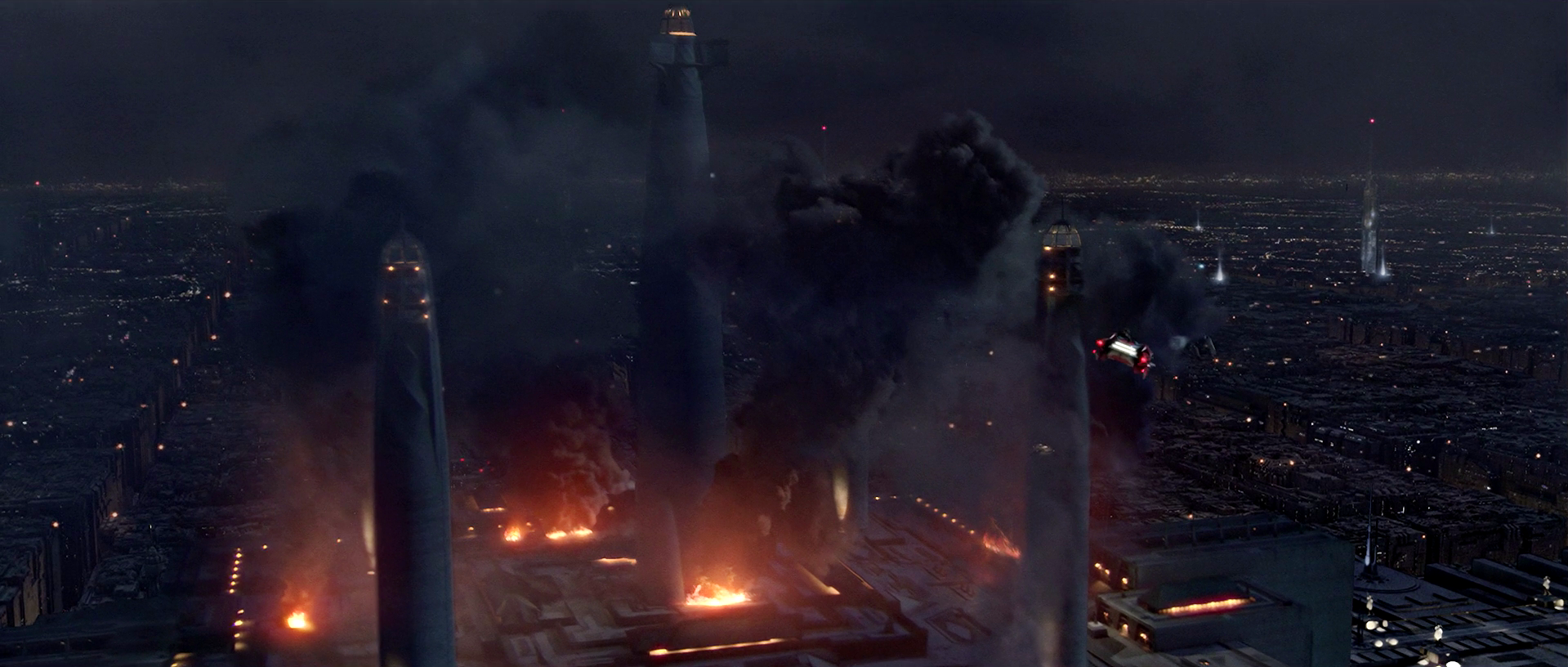
The Jedi Temple fell in the first hours of Order 66, the directive that initiated the Great Jedi Purge.
During the Clone Wars, the Jedi, serving as generals and commanders of the Grand Army, coordinated their efforts from the Temple. However, as the war began to conclude, the Jedi became more separated from the hierarchy of the military command and establishment. When Palpatine was revealed as the Sith Lord the Jedi had been searching for, he ordered the execution of Order 66 and sent his new apprentice Darth Vader to the Jedi Temple. Entering with the 501st Legion, Vader and the clone troopers seized the Temple, killing all the Jedi and younglings inside and setting the monastery ablaze. Later, Masters Yoda and Kenobi infiltrated the Temple to discover what had occurred. It was there they reconfigured a distress signal transmitting from the Temple to any surviving Jedi asking them to return (into a Sith trap), and learned the truth of Skywalker's fall and Palpatine's identity as the Dark Lord of the Sith.
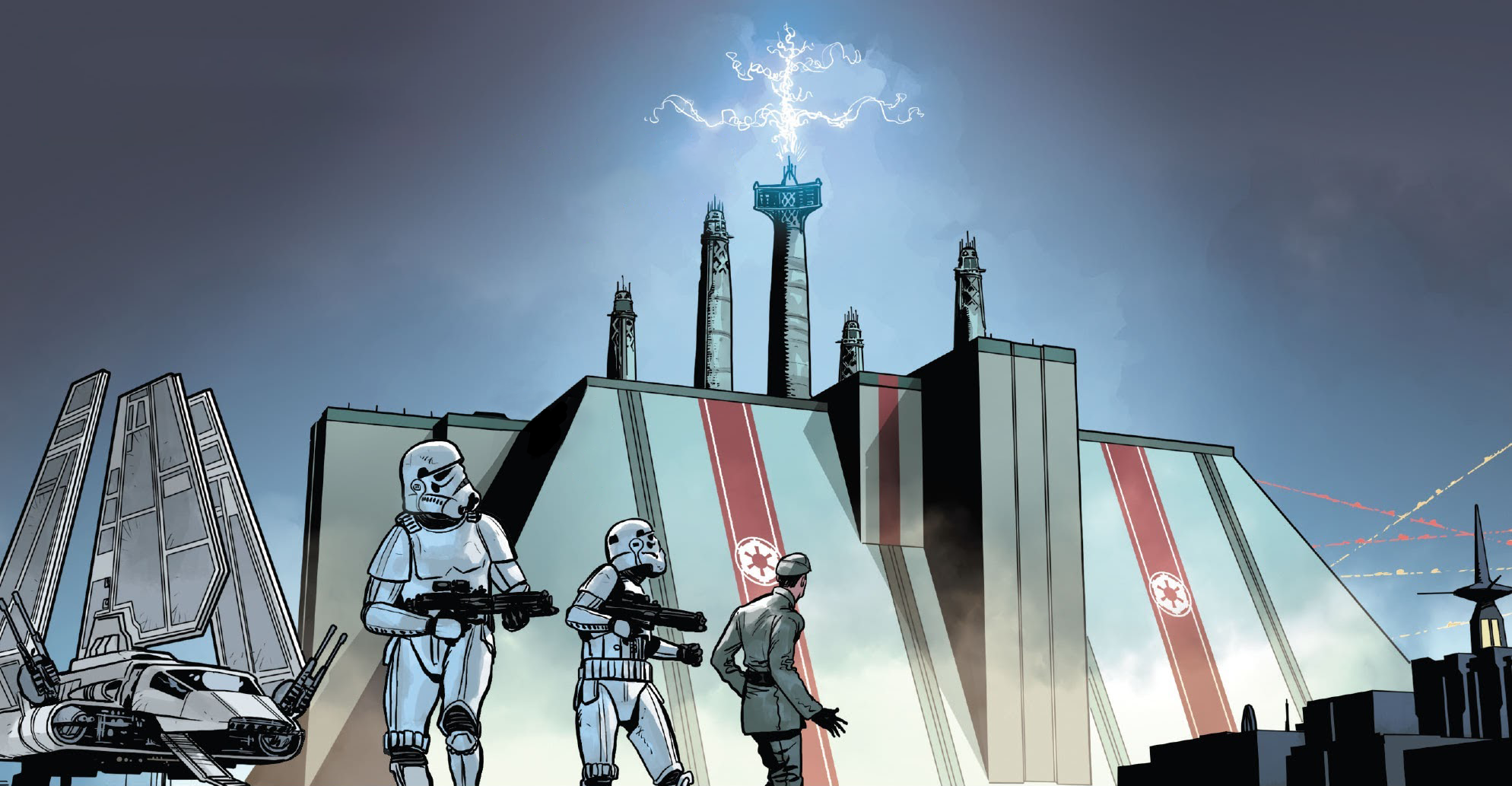
After the Clone Wars, the Emperor had the Jedi Temple converted into the Imperial Palace.
After the war, Palpatine turned the Temple into the Imperial Palace, using it as his new home. The Temple's spires remained intact though the rest of the Temple was heavily remodeled and expanded. The hallways were stripped of all statues and Republic-era ornaments. Where they had once been quiet and solemn, they became filled with busy government workers and functionaries. A large landing courtyard allowed for shuttles and starships to land. The entire Palace complex was watched over by the red-robed Imperial Royal Guard. The center spire was converted into the Emperor's throne room with a ten-meter tall podium in the center accessible by the Emperor from his residence via a private turbolift. The structure remained standing on Coruscant throughout the Emperor's reign.
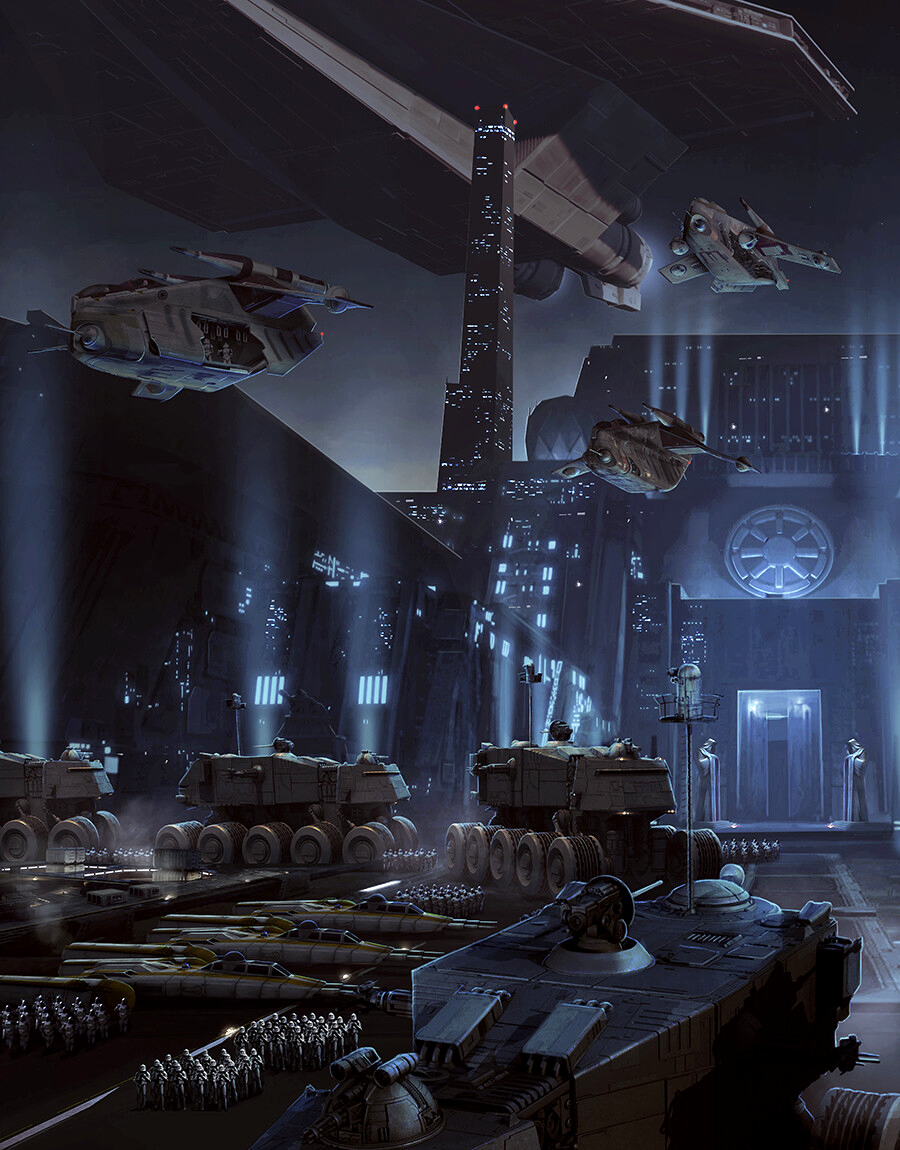
The Imperial Inspectorate HQ was originally the Republic Center for Military Operations.
The Imperial Inspectorate HQ served as the Imperial Military headquarters of the Inspectorate as well as the Naval Intelligence Agency during the Empire's reign. The facility was originally a Republic military base; constructed in close proximity to the staging areas for Star Destroyers, the Republic Center for Military Operations was designed by Orson Callan Krennic. Outside of the complex was an airfield with Venator-class Star Destroyers, HAVw A6 Juggernauts, and other ships. The First Battle Memorial was located in front of the base's main entrance.
The base was protected by shock troopers of the Coruscant Guard. Inside was a military prison, the cells had two options for entering. The first was sliding a keycard. The second was pressing a button on the outside of each cell. The cells had ray-shielded doors to make sure prisoners did not escape. Inside each cell was a bed and bowls for water and food. Another area in the prison was a medium circular room with a fairly large computer for scanning people before they entered the base, a crate for weapons and communication devices, and a red button to start the red-alert sequence.
In the latter half of the war, the prison held Whorm Loathsom, Poggle the Lesser, and Wat Tambor. It was also here that Ahsoka Tano escaped when she was suspected of killing Letta Turmond. Additionally, inside the compound was a military tribunal courtroom, in which the court decided the fate of dangerous criminals. It was a tall room, with platforms extending into its center for the accused, prosecution, and defense. There was seating along its walls for the presiding official, jury, and other trial participants and onlookers.
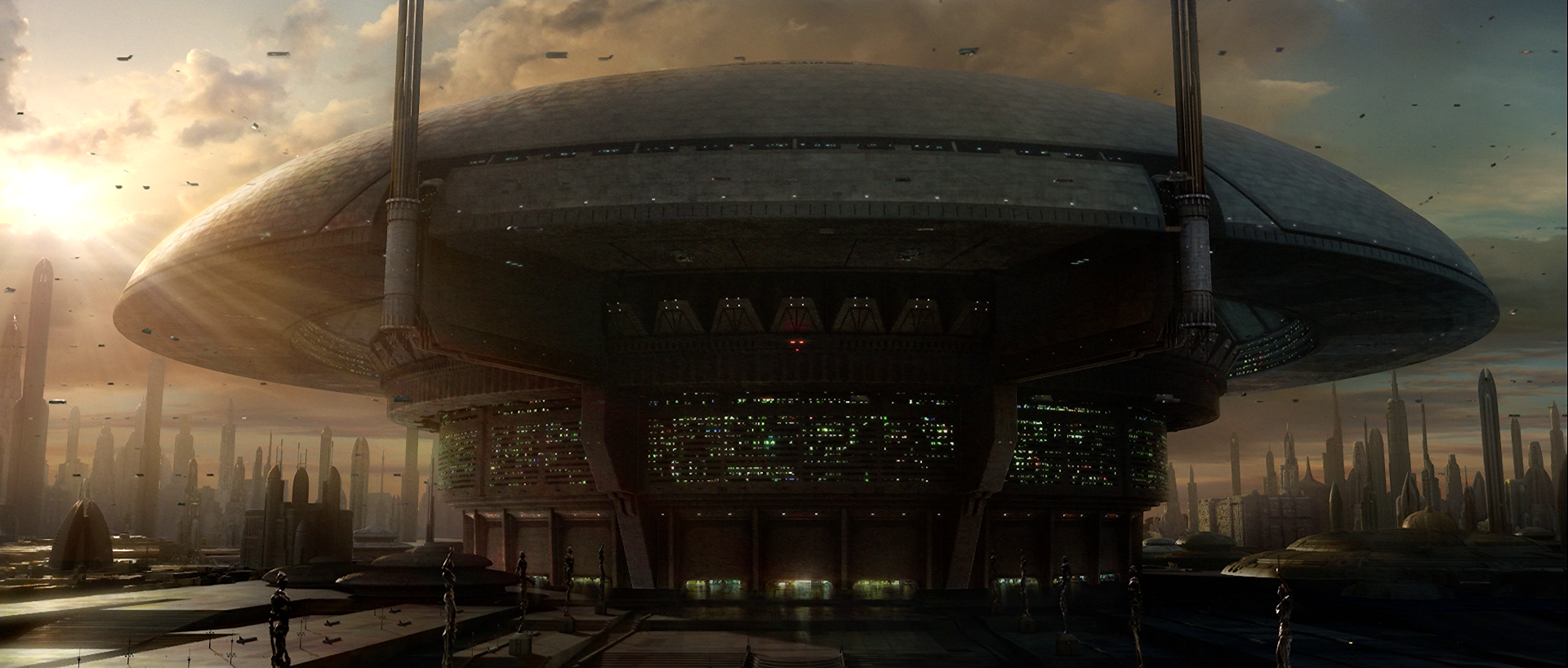
The Galactic Senate Building was the political heart of the galaxy during the age of the Galactic Republic.
The Senate Building was located within the heart of the dense Federal District. Delegates would meet here during sessions of congress to discuss legislation and galactic policy. The structure's recognizable dome was two kilometers in diameter, and the rotunda's chamber could seat over a thousand senators. Each senatorial delegation had their own hover platform, which they could detach from the walls of the chamber. They could then float it throughout the cavernous hall to be recognized by the Senate chair or to debate the issue at hand. In the center of the Senate chamber was the Chancellor's podium. Seated in it would be the Supreme Chancellor and the Senate's Vice Chair, who would lead sessions of congress. The podium could be lowered to an office used by the Chancellor below the chamber.
Directly adjacent to the Senate Building was the Senate Office Building. The executive building had docking bays that wrapped around the building, allowing Senators to land their private shuttles and walk inside. The building contained mostly offices and meeting rooms for members of the Senate but also held the offices used on a day-to-day basis by the Supreme Chancellor. During Palpatine's term, the Chancellor's office was decorated with red floors and walls as well as several statues. A lobby led to the Chancellor's public office, which contained a grand desk and large window that overlooked the cityscape. To the side, another hallway led to Palpatine's inner private office.
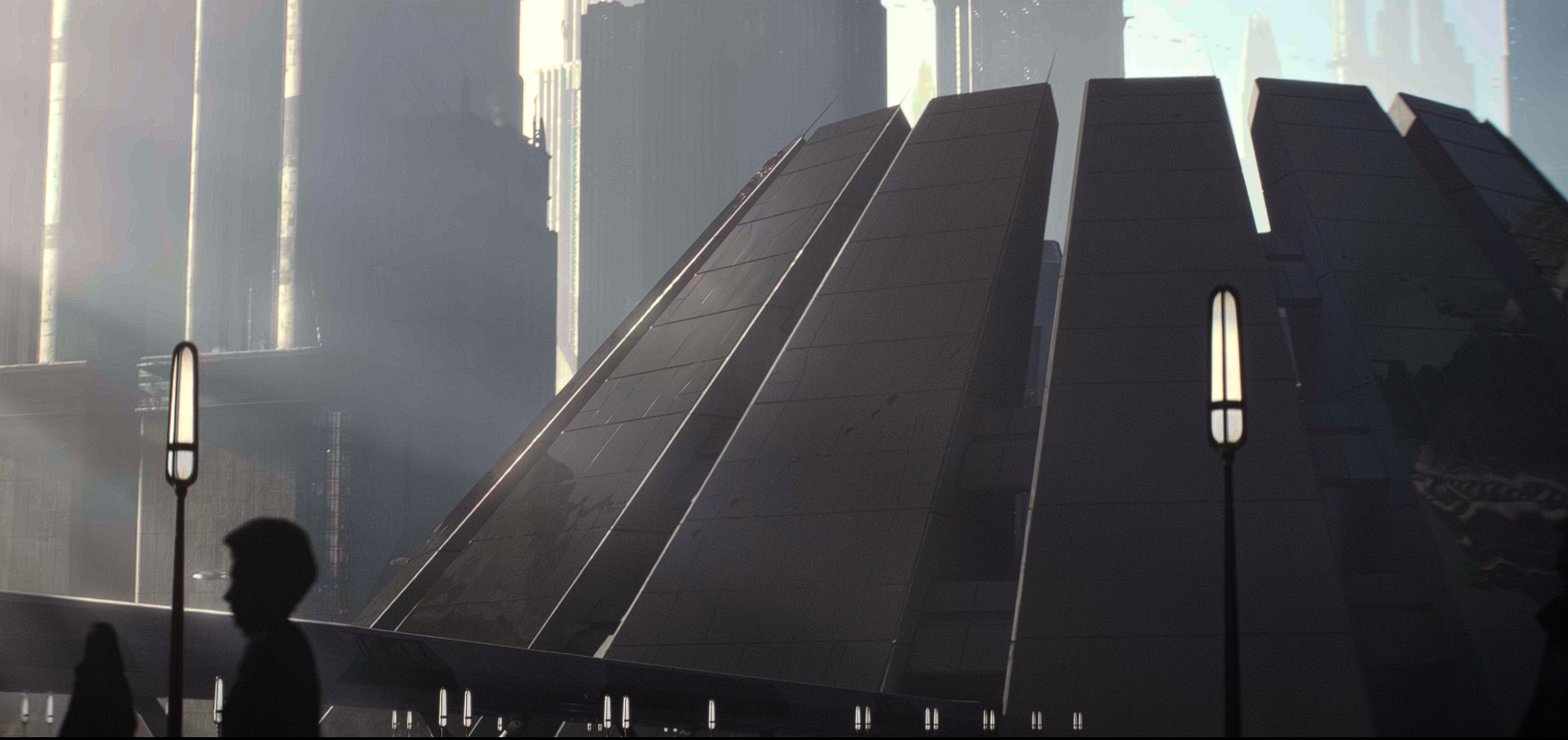
The ISB Central Office towered over the COMPNOR complex.
The COMPNOR arcology was a huge, labyrinthine building in the Imperial City's Federal District, housing several Imperial government agencies including the Commission for the Preservation of the New Order and the Ubiqtorate. High-ranking officers such as Minister of Information Pollux Hax maintained offices in the complex, while the Imperial Security Bureau's Central Office was directly connected with it. The importance of the complex led to it being considered one of the three points of the District's "supreme triangle", alongside the Imperial Palace and Navy Intelligence Headquarters.
A chain of popular fast food stores that were located in the Coruscant Underworld. Eating there was considered a must for travelers to the planet. Many Stormtroopers frequented the locations for their famous dishes.
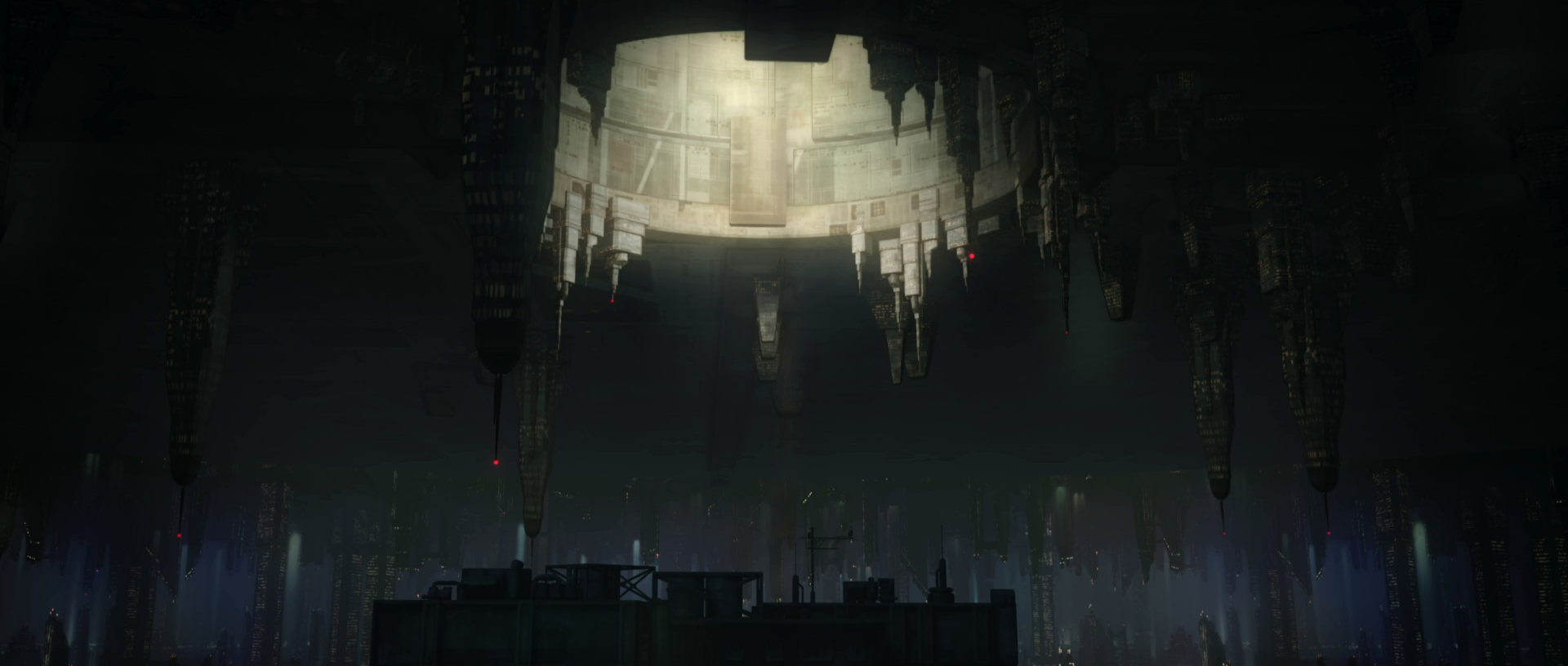
An underworld of crime, poverty, and darkness existed beneath the upper levels of Coruscant.
Beneath the top-level structures, streets and glistening lights of the city surface was Coruscant's underworld. Its underworld was known for its crime and smugglers. It was accessible by huge portals that additionally served as ventilation shafts. The underworld was a massive city beneath a city with hundreds of levels built on top of each other. On each level, dwellings and smaller buildings were squeezed in between massive towers and infrastructure that serviced the upper levels. The streets and alleyways were narrow and large sections contained massive buildings and warehouses, largely abandoned. Sunlight almost never reached the lower levels, which had to be artificially lit.
The population was able to move from one area to another via trains that ran below and above the planet's surface. While airspeeders were used, they were a less common sight than on the surface levels. The underworld, containing a vast population of the poor and criminal, was dark and violent. Those who wanted to disappear to hide from the authorities or to conduct illegal transactions could blend in despite the presence of cam droids and other monitoring technology. Patrolled by the underworld police division of the Coruscant Security Force, the underworld was where large populations of species not loyal to the Emperor were relocated to after the formation of the Empire. Uprisings and riots became common, with stormtroopers frequently called in to assist the Coruscant cops in putting down any dissent with ruthless violence.
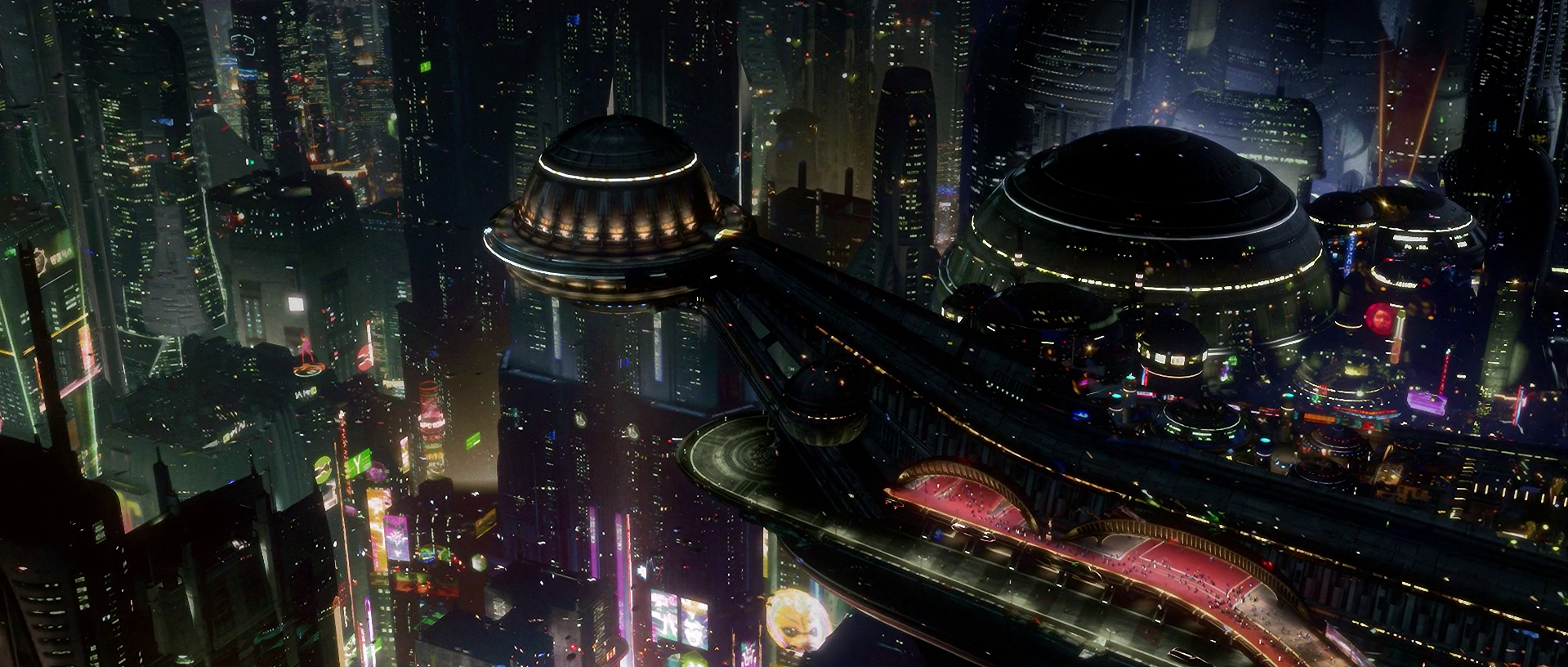
The Galaxies Opera House was located in the upper levels of the Uscru District.
Coruscant's entertainment districts catered to everyone from the wealthy and powerful to the secretive and criminal. The upper sections of the Uscru District reached to upper levels of the city where the Galaxies Opera House was located. It was here that Chancellor Palpatine often would come to enjoy various performances. He also met Anakin Skywalker and told him the story of Darth Plagueis to subvert Skywalker's faith in the Jedi.
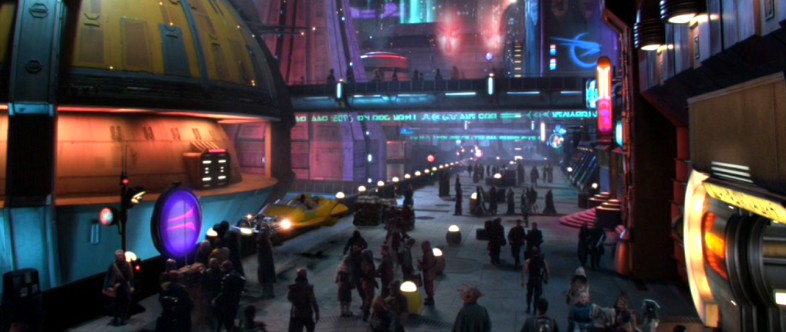
The Uscru District was defined by a combination of bars, casinos, clubs, and other entertainment-based establishments.
Further down in the lower levels of the Uscru Entertainment District was a variety of establishments, most notably the Outlander Club. The club was situated in a less developed area of the district and did not garner as much attention from the police, a fact that worked in the club's favor. Its labyrinth of bars, gambling rooms and sleeping quarters allowed for a wide variety of visitors and entertainment. In the center was a large bar, usually crowded, that catered to all parts of Coruscant's society. Jedi Knights Kenobi and Skywalker pursued bounty hunter Zam Wesell into the Uscru District after her attempted assassination of Senator Amidala. The pursuit ended in the Outlander Club, where the Jedi located the assassin. However, Wesell was killed by bounty hunter Jango Fett in an alley outside the club before the Jedi could finish questioning her.
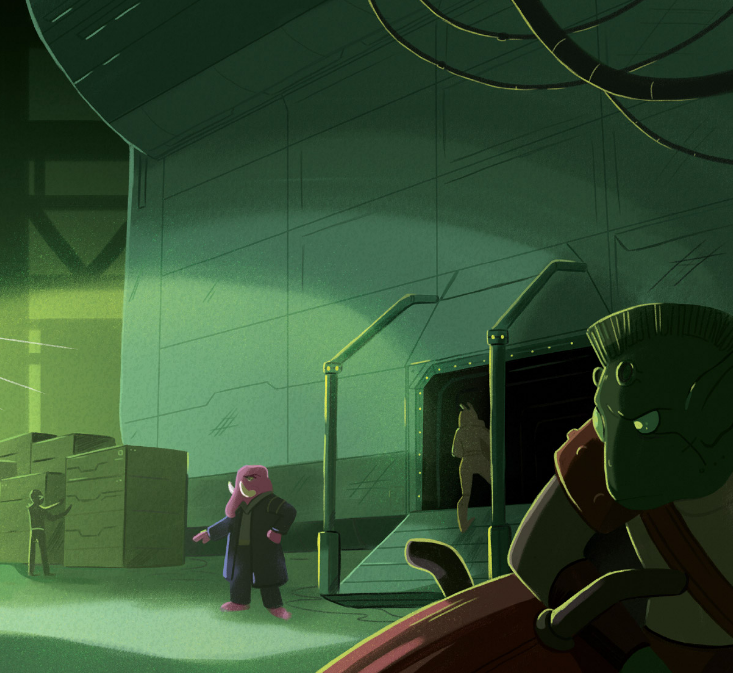
Level 4 was part of the "forbidden levels" of Coruscant.
The "forbidden levels" was a name given to the levels beneath level 5 of Coruscant, which were banned from public entry.

Coruscant's industrial zone, known as The Works, was once a manufacturing powerhouse known throughout the galaxy.
A large sector and industrial area, The Works was once a great manufacturing district, recognized as a major source of production for spacecraft parts, construction droids, and building materials. However, centuries prior to the Clone Wars, increasingly high cost on Coruscant prompted most manufacturers to shift their operations to off-planet facilities. Afterwards, the Works mainly consisted of long-abandoned buildings and empty warehouses, many of which were appropriated by criminals, with large areas rendered uninhabitable by toxic waste. Because of this, a derelict hangar in the neglected industrial zone was the site of clandestine meetings between Darth Sidious and Darth Tyranus during the Clone Wars.
In early drafts of Star Wars: Episode VI Return of the Jedi, the Imperial capital planet was set to appear under the name Had Abbadon. During the development of Star Wars: Episode I The Phantom Menace, George Lucas officially adopted the name Coruscant for the planet, a name that was created by Timothy Zahn for his June 1991 Legends novel Heir to the Empire. The planet first appeared in the 1997 Special Edition of Return of the Jedi, which showed scenes on Coruscant of a jubilant population celebrating the demise of the Emperor, with its name first mentioned in The Phantom Menace. The prequel trilogy and the Star Wars: The Clone Wars film and television series showed Coruscant as a major center of activity and action. In Rogue One: A Star Wars Story the planet is briefly revisited via the dreams of Jyn Erso, featuring her childhood on Coruscant with her father, Galen Erso and Orson Krennic. Coruscant was a location in early versions of Star Wars: Episode IX—both in Colin Trevorrow's Duel of the Fates script and in the early concept stages for what became The Rise of Skywalker; For the latter, it eventually evolved into Exegol.